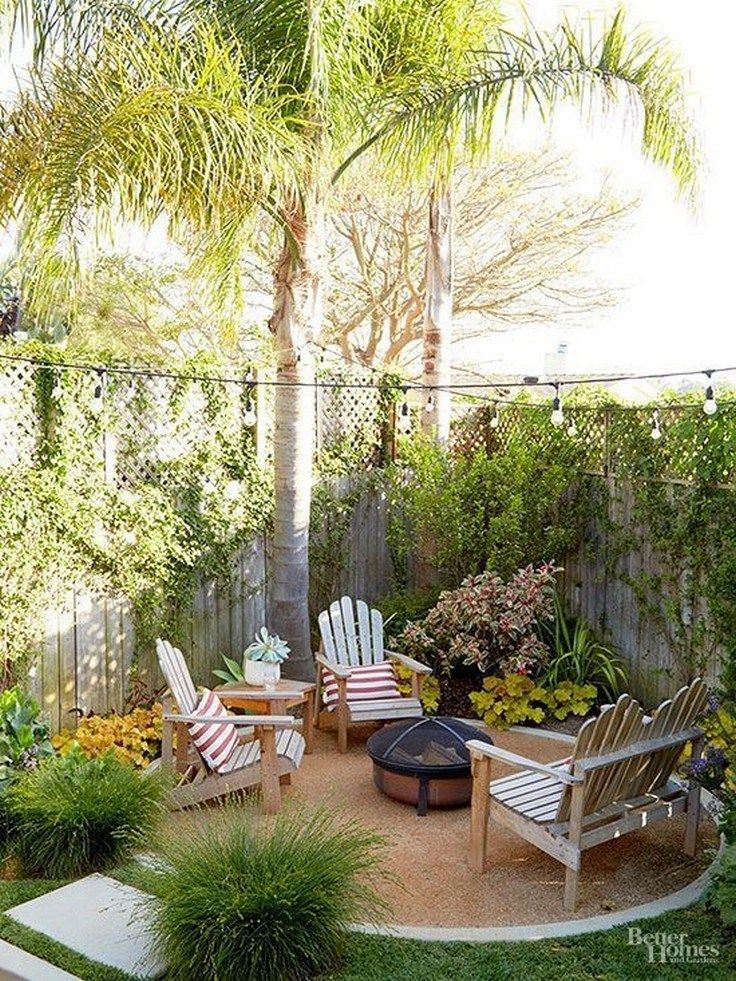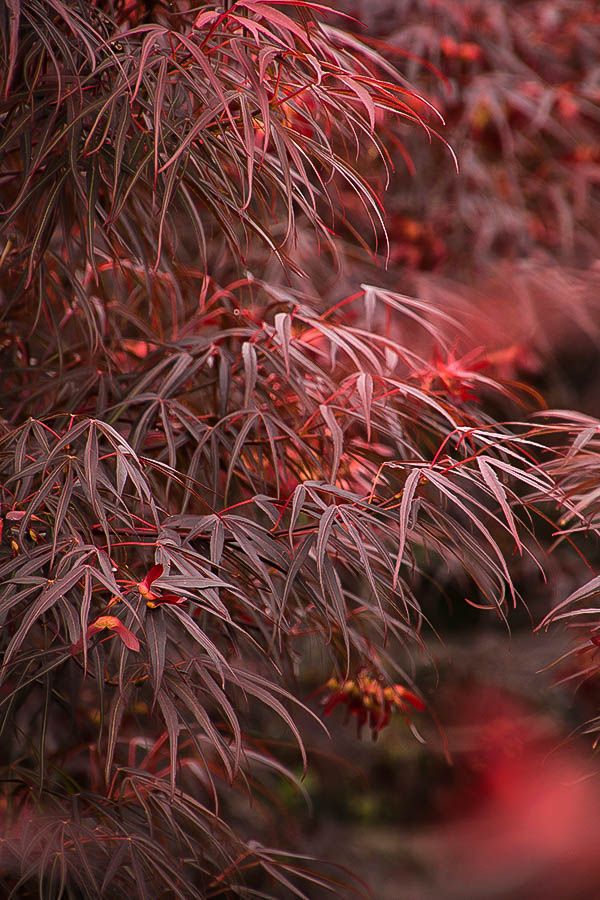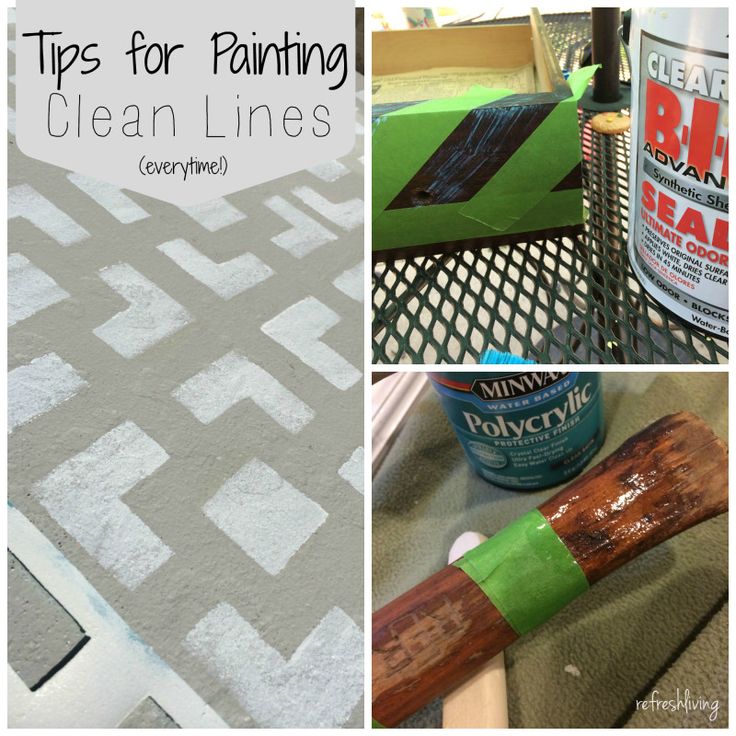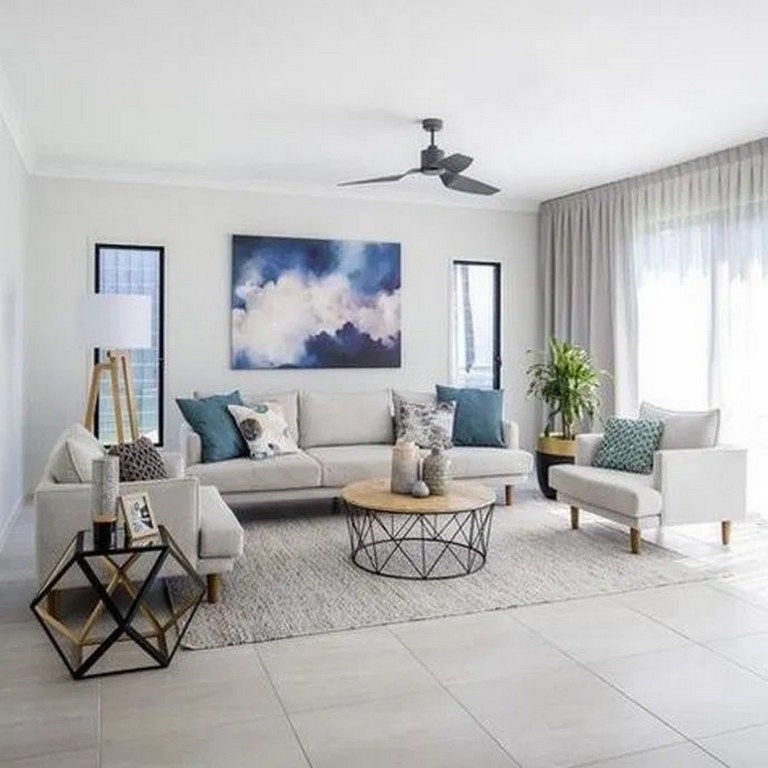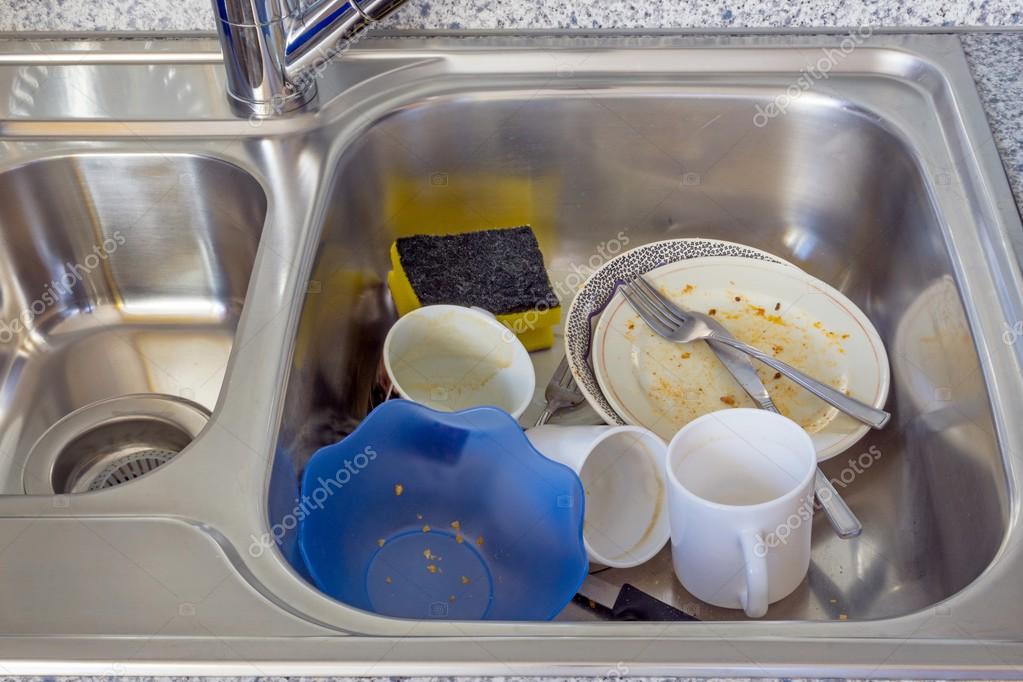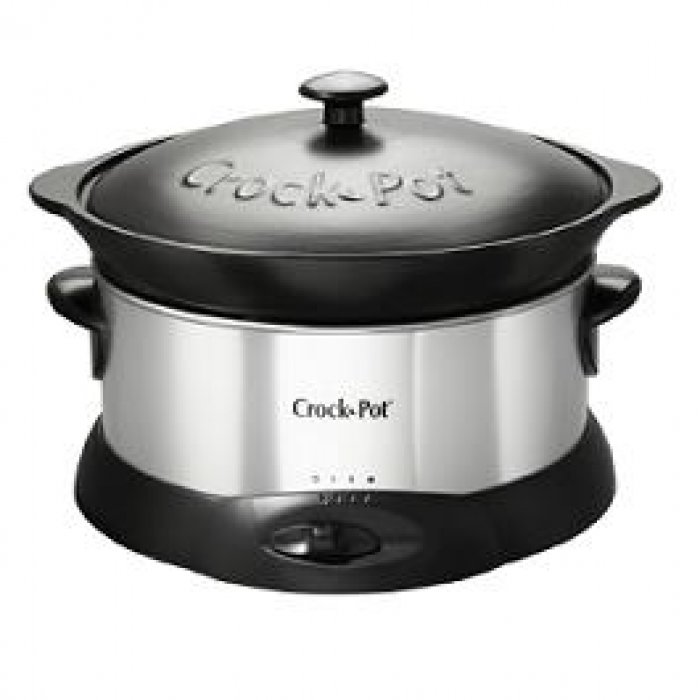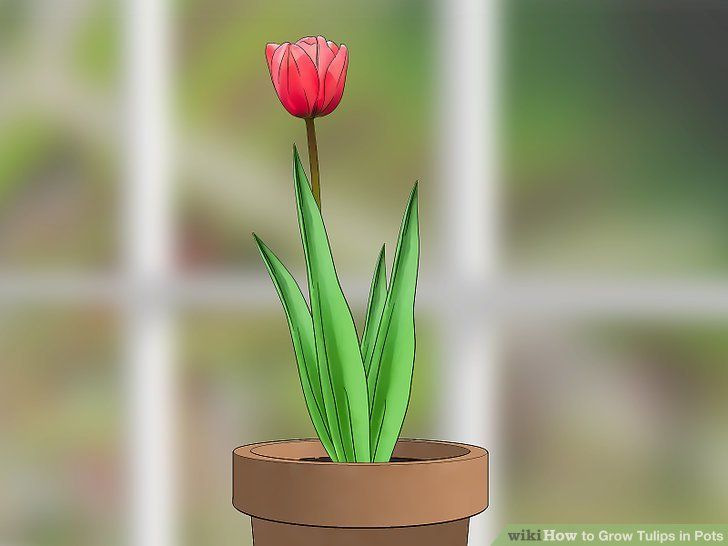Inspiration for small gardens
30 space-savvy ways to max a tiny garden |
(Image credit: Future / Polly Wreford)
Small garden ideas have lots of advantages – the main one being they're wonderfully low-maintenance.
Small gardens, city terraces, balconies and even unloved corners can all make enticing outdoor spaces with a little care and attention. Visual tricks, good lighting, interesting planting and comfortable seating will play to the strengths of the most awkward or compact of gardens.
Whether you're looking for garden ideas to create an impressive balcony garden, want to introduce some garden furniture to your patio or love to be surrounded by greenery, you'll find lots of inspiration for your small outdoor space below.
Small garden ideas – 30 compact spaces big on style
Even the smallest outdoor space can become a beautifully designed garden. The key is to keep things simple and fuss-free.
Limit landscaping materials, such as paving and decking, to no more than a couple of styles and select a pared-down color palette. Use the concept of the ‘slow reveal’, too. If you can’t see all your garden at once, it creates a sense of space as you’re not sure what lies around a corner. A secluded seating spot behind a large shrub, for example, gives the sense of a ‘journey’ through the garden. This works in even the smallest of spaces.
Choose the right plant for the right place, so check how sunny or shady your garden is first. Then take advantage of vertical growing options to make more space for plants. A combination of structural evergreens and seasonal planting works well.
Below we share our favorite small garden ideas, as chosen by the experts.
1. Plan the layout to perfection
(Image credit: garden Club London / Joanna Kossak)
'Plan the location of seating and lounging areas before landscaping a small garden,' advises Rachel Crow, Homes & Gardens' Gardens Editor. 'Set these back so that they are not protruding on to walkways and terraces.
'Understand, too, the movement of the sun and shade in your small garden and position seating accordingly.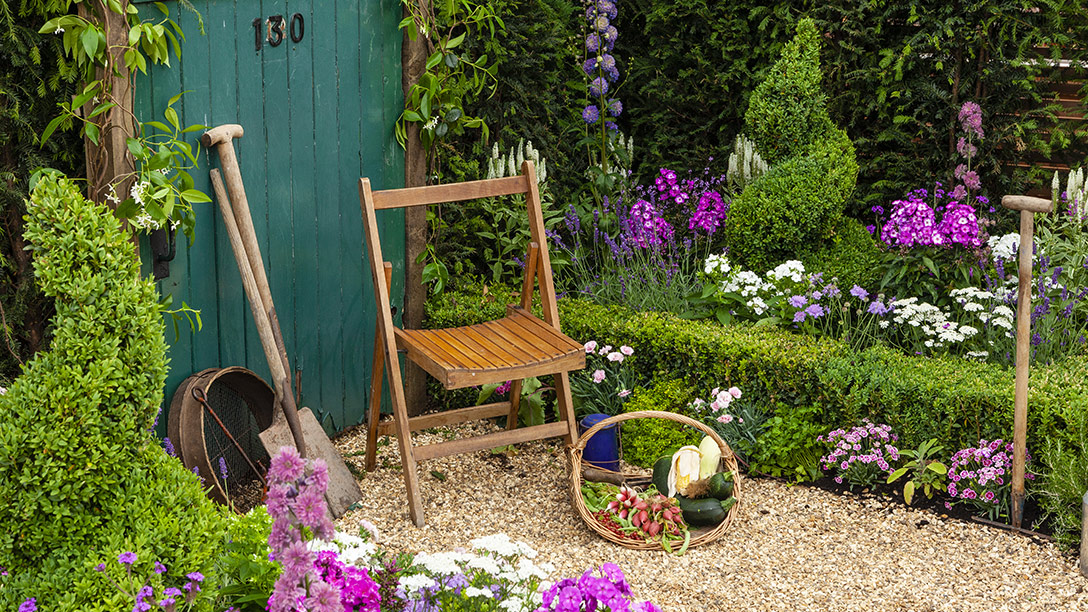 '
'
2. Pick a one-color scheme
(Image credit: Sue Townsend)
'Though it's wonderful to plant a wide range of flowers in a small garden, a one-color planting scheme can work wonders at making a tiny space feel sleekly designed, less chaotic and calmer,' says Lucy Searle, Editor in Chief of Homes & Gardens.
'Just as we tend to keep small rooms inside our homes minimally furnished and to a limited color scheme if we want them to feel larger, we can apply this to our small garden ideas to enhance them.'
3. Use repetition to your advantage
(Image credit: Leigh Clapp)
Repetition is used in interior design to make rooms feel well-designed, balanced and cohesive, and this is a trick that can be used, just like the one-color scheme, to enhance small gardens.
'Why does repetition work in design?' asks Jennifer Ebert Homes & Gardens' Digital Editor. 'It's pleasing to the eye and therefore a wonderful way to create a smart-looking space that in no way jars.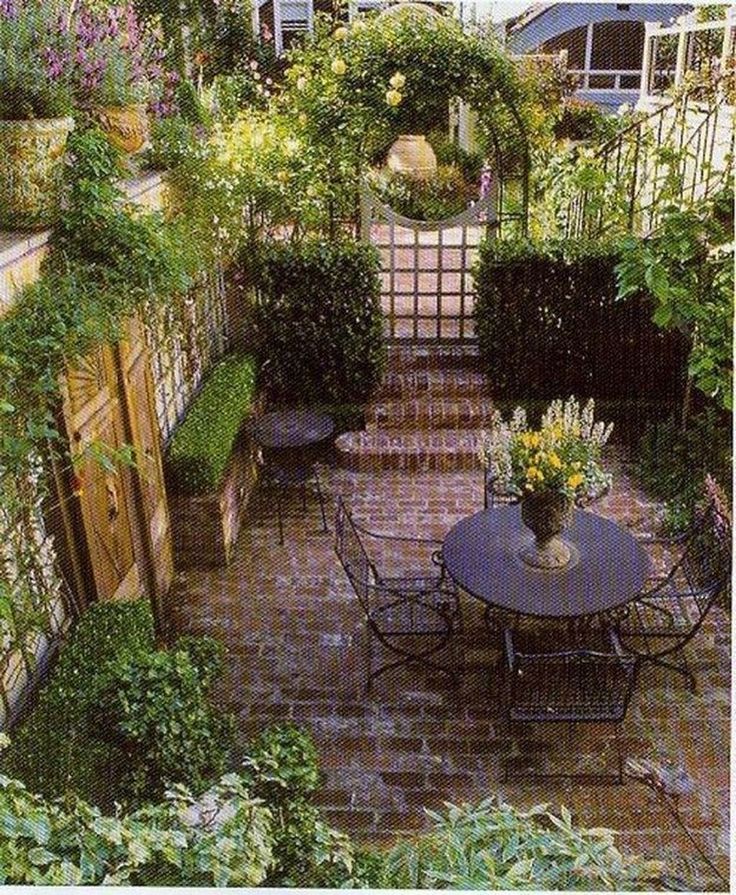 Repetition in small gardens can be created with flower colors, plant varieties or simply the choice of furniture.'
Repetition in small gardens can be created with flower colors, plant varieties or simply the choice of furniture.'
4. Devote attention to an outdoor living space
(Image credit: Sandtex)
More than in a large garden, attention should be given to outdoor living room ideas. It may be that you have little room for both planting and seating, so seating, surrounded by space-savvy container planting or borders is a real must. Plus, since your small garden is going to be very visible from indoors, unlike a large garden, which can rely on long-reaching views, it really is vital to get this space just right.
'Choose simple, low-lying furniture that fits with the lines and style of the landscaping,' advises Rachel Crow. 'Dress with cushions that complement the surrounding flowers and greenery.'
5. Steal elements of cottage garden style
(Image credit: Clive Nichols)
Cottage garden ideas were designed for small gardens, with cottage garden plants characterized by their bright exuberance and the juxtaposition of vegetables, fruit and flowers in borders.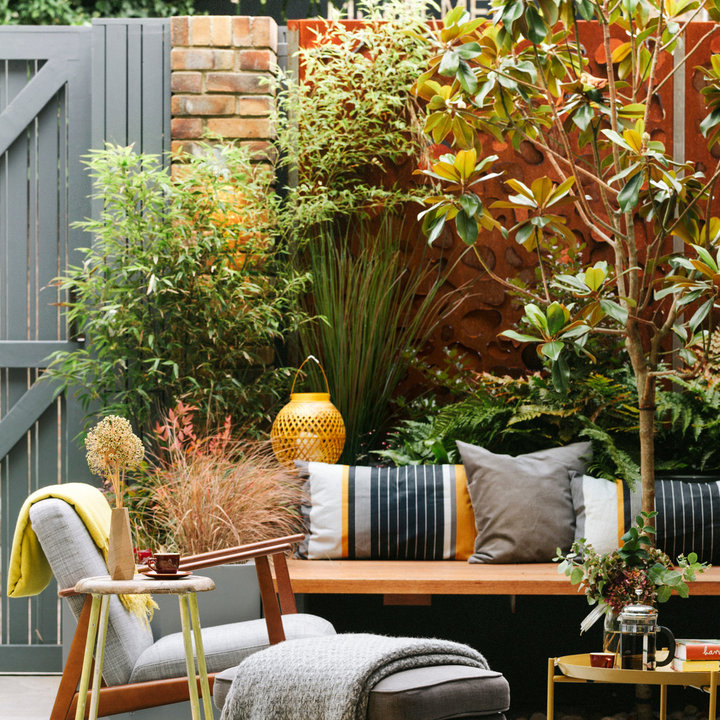
'Flower bed ideas in cottage garden style will bring plenty of interest to small gardens,' says Melanie Griffiths, Editor of Period Living magazine, and one of Homes & Gardens' gardening experts. 'But you can steal other cottage garden tropes, such as arbors, to bring vertical interest. This is a great way to make small gardens pack a punch.'
6. Turn a small garden into a leisure zone
(Image credit: Kate Anne Designs / Jeffrey Brian Riemer)
What is the most important element that you can design into your small garden? Unsurprisingly the answer is that it depends what you want to get from your garden and how you will use it.
So, if pool ideas have seemed out of reach for your tiny space, have a rethink about how you could create the perfect pool area, or seating area or dining area (or all three) while still making your space feel green. Here, it is achieved by privacy hedges, which provide evergreen color, planting between pavers and container gardening ideas.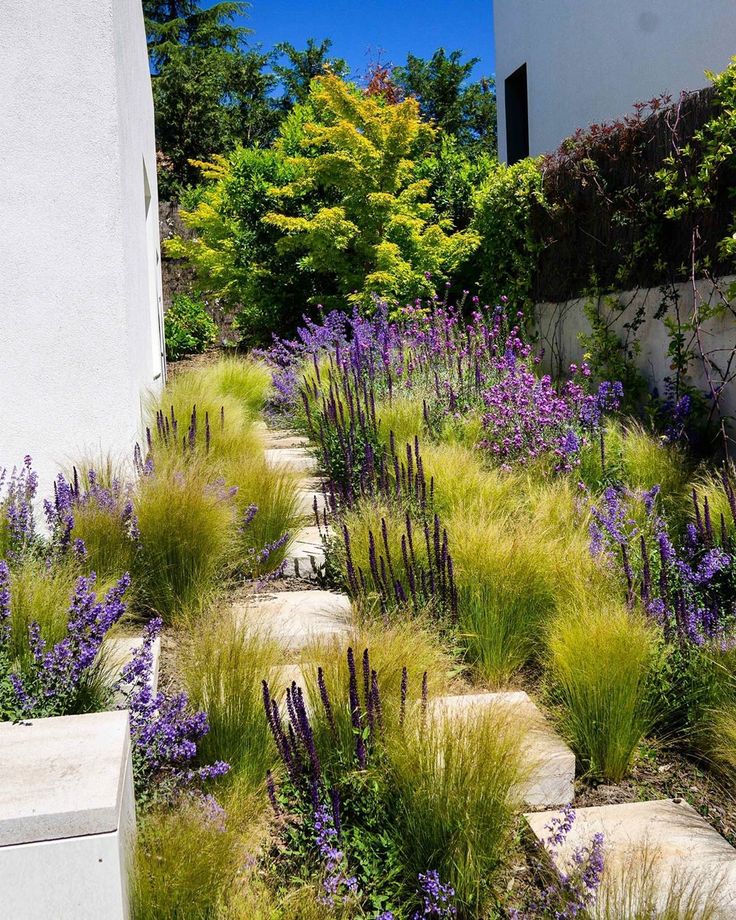
7. Use trellis to help you borrow a view
(Image credit: Future / Polly Wreford)
Trellis ideas are wonderful for small gardens because they allow you to put up a barrier without it feeling solid, looming or limited. Not only do they let you see a beautiful view beyond your small garden, they also can be used to disguise unsightly features, such as a compost heap, without making the garden feel smaller.
8. Divide a small garden into rooms
(Image credit: Benjamin Moore)
Dividing even a small garden into defined 'rooms' can make it feel larger. The key to doing this isn't with obviously visible barriers – different flooring materials from space to space or overhead treatments can create zones. You can create the latter with draped climbers or look to attractive pergola ideas that can create neat-looking shade and privacy solutions, too.
'Use living walls and decorative filigree screens to create shelter and enhance privacy,' says Homes & Gardens' Gardens Expert Rachel Crow.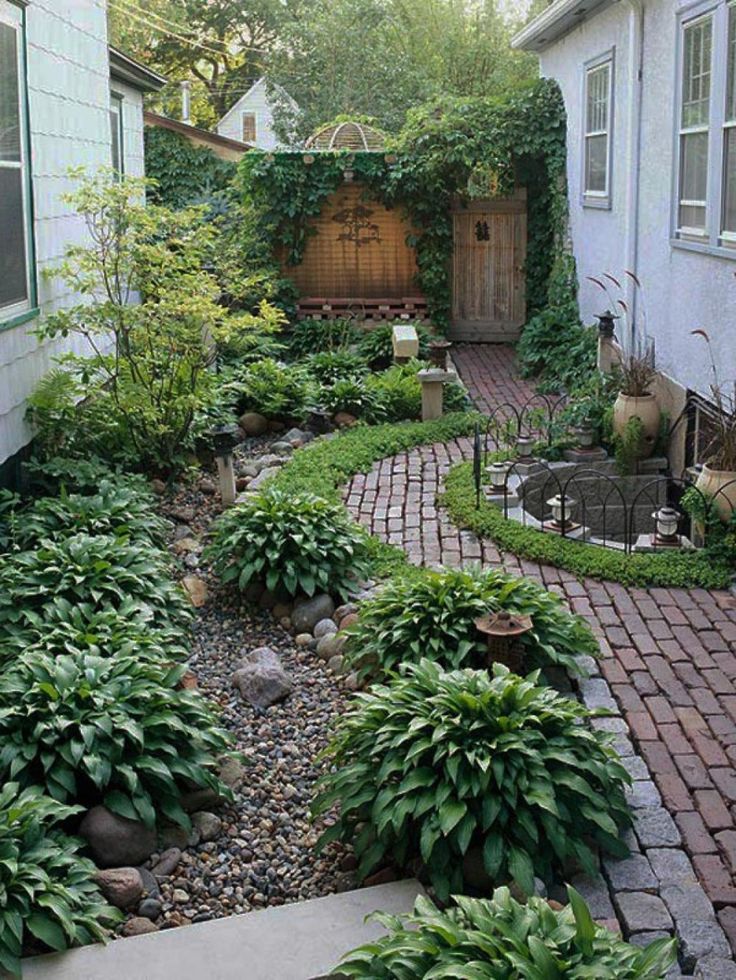
1. Zone a small garden with decking
(Image credit: Annaick Guitteny/Future Publishing Ltd)
Decking does more than provide a space for sitting, drinking and dining — it can also help divide up a small garden into zones, helping the space feel curated, functional and possibly even a little bit bigger.
In the small garden with decking above, the decking weaves a path through plant bedding, creating multiple terraces within a compact space.
2. Add color with pretty paintwork
(Image credit: Tim Young/Future Publishing Ltd)
If you’re looking for an aesthetic shake up that doesn’t break the bank, grab yourself a pot of outdoor paint. Giving unloved woodwork a few coats is one of the most cost-effective ways to make a big impact within your small backyard ideas, turning that all-too-close back fence or shed into a feature backdrop.
Lighter colors can make a pokey garden feel lighter and brighter, while going bold will make a serious statement.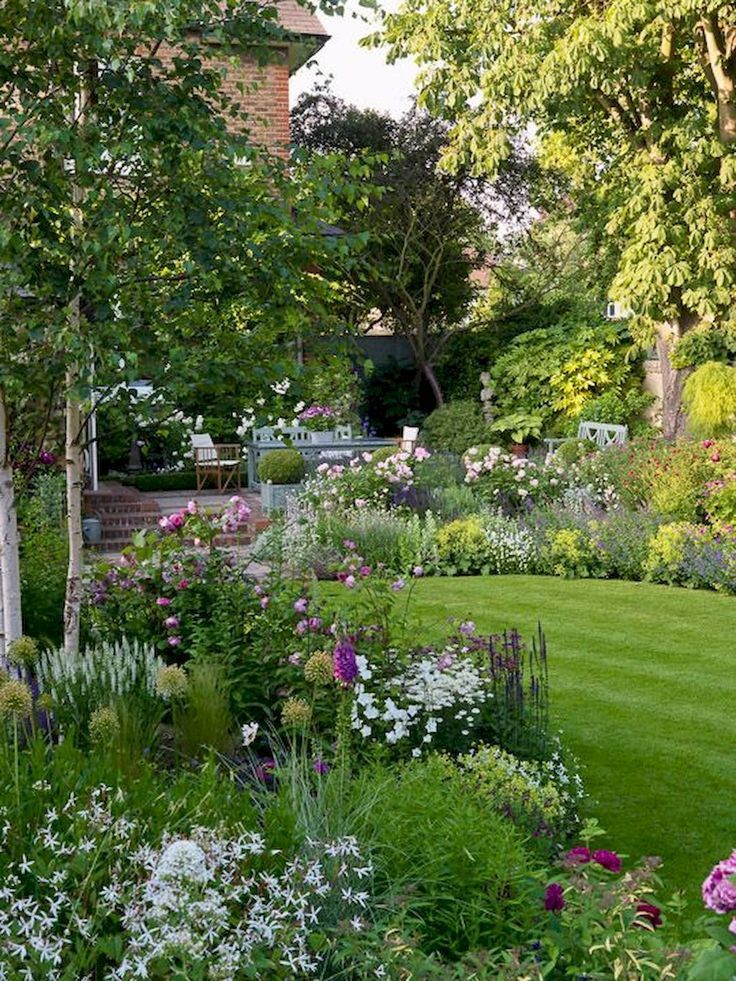
3. Make space for a rock garden
(Image credit: Annaick Guitteny/Future Publishing Ltd)
Rockeries aren’t the most contemporary of water feature ideas, but their scalability makes them among the easiest to squeeze into smaller spaces.
A small rock garden idea – particularly if partially hidden among whimsical planting – can add a sense of wonder to the garden, as well as the relaxing ambient soundtrack of rippling water.
4. Dedicate a flower bed to edibles
(Image credit: Annaick Guitteny Photography)
Keen cooks, get yourself a vegetable patch. You don’t need a rolling kitchen garden to grow your own food, just an area of bedding dedicated to edible delights.
Great small vegetable garden ideas include chillies, runner beans and tomatoes because they all offer high yields in a small space. If you’re really short on square footage, potted herbs can be stacked up on outdoor shelving.
And if you encounter problems with plant growth, it may be worth knowing how to add calcium to soil, as this simple method (often involving cracked eggs) can ensure your small garden ideas continue to grow healthy and strong.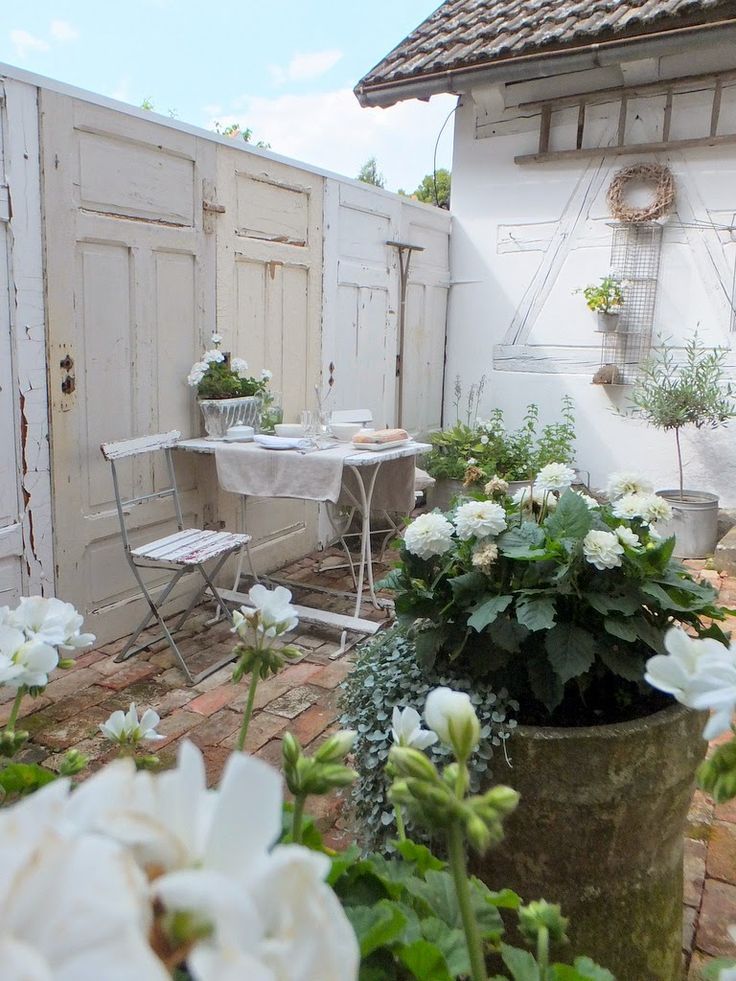 Calcium encourages strong cell walls that ensure the plant grows upright while making your plants less prone to diseases and pests. And this is particularly important in terms of small vegetable gardens and flower beds.
Calcium encourages strong cell walls that ensure the plant grows upright while making your plants less prone to diseases and pests. And this is particularly important in terms of small vegetable gardens and flower beds.
5. No grass, no problem
(Image credit: Brent Darby/Future Publishing Ltd)
Swapping turf for a patio doesn’t mean you need to ditch green for grey. Making your garden patio-first is a low maintenance life-saver, meaning you can focus on bringing a wider array of greenery into the space.
Here, easily cared-for paving slabs are lifted with raised bedding and climbers weaving across a trellis.
6. Keep it simple in a small garden
(Image credit: Future / Spike Powell)
Don’t get too carried away when planning a small garden. A carefully chosen palette of materials and plants is often the most satisfying.
However, this doesn’t mean you can’t be adventurous and experimental, just be mindful that trying to squeeze everything into a compact space will make it cluttered and decrease usability.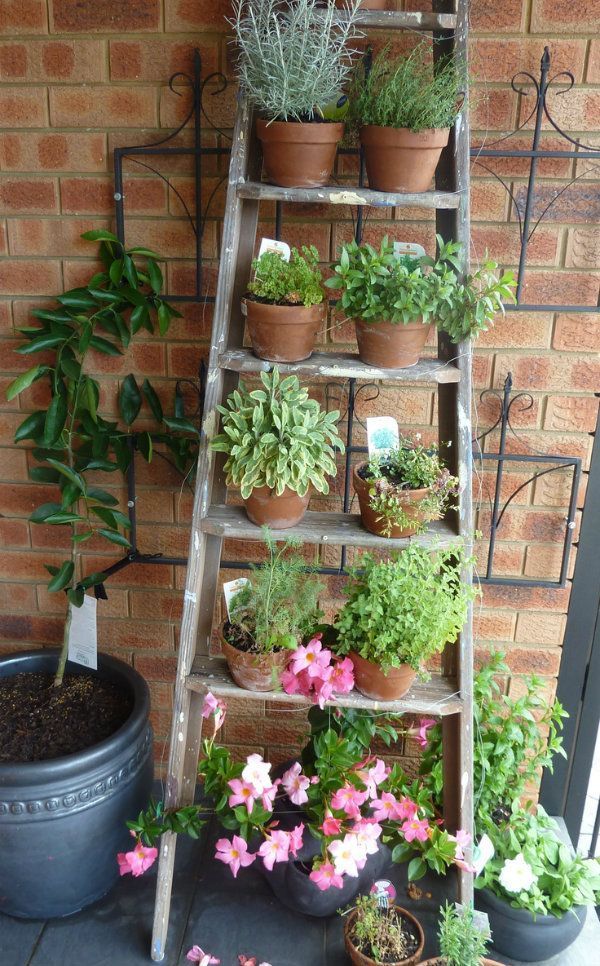
7. Plant smart in tiny spaces
(Image credit: Future / Colin Poole)
The choice of planting is essential in smaller gardens. Use plants that won’t overcrowd the space.
However, you also need to ensure you are not always looking at fencing or boundary walls as somewhere to plant. A really useful plant is the evergreen climber Trachelospermum Jasminoides, commonly known as star jasmine. It will offer year-round interest with an abundance of white flower from mid to late summer.
8. Pot up in a small garden
(Image credit: Future / Paul Raeside)
Try large pots and planters in a compact garden. The bigger they are, the better their impact will be as this will give your plants room to thrive and you’ll have less watering to do. Big statement pots give you a real focal point and that sense of lush greenery en masse. Use matching materials for the containers, or at least materials and colours that complement each other.
Using plants in pots provides additional flexibility in smaller gardens.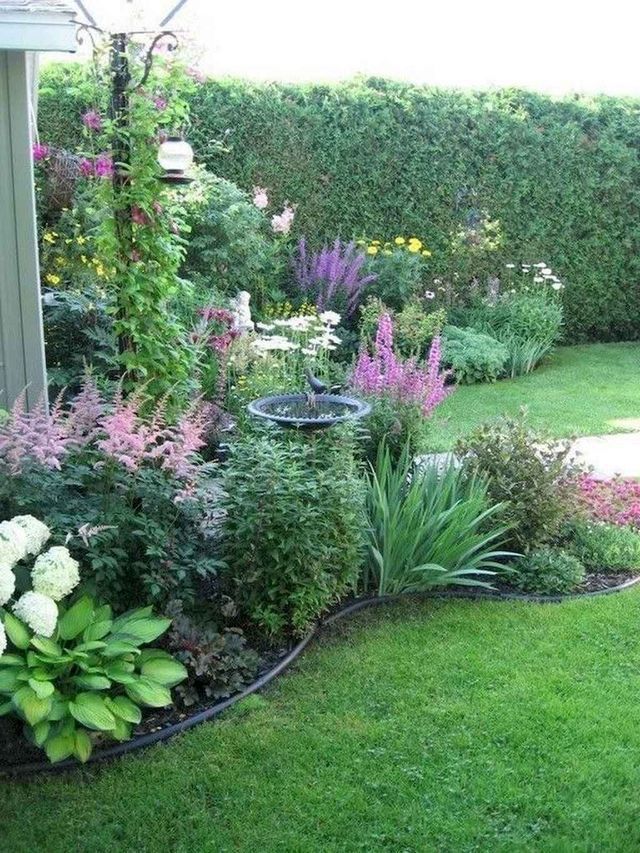 They come into their own in balcony gardens or if looking for courtyard garden ideas where there is no earth to plant beds in.
They come into their own in balcony gardens or if looking for courtyard garden ideas where there is no earth to plant beds in.
You are able to position the pots around your dining terrace and relocate them easily whenever you need to, as well as vary the planting from season to season.
9. Consistency is key
(Image credit: Future / Emme Lee)
Continuity of approach from the inside out will help make the garden feel part of your home.
This can range from paint colors and materials to simply using plants whose flower color complements the interior.
Be mindful that although some paving materials can be used both internally and externally, the stone outside will tend to weather over time.
10. Create interest with a water feature
(Image credit: Future / Colin Poole)
Introduce focal points, which can include sculpture or water features, specimen trees and even an outdoor fireplace.
Correct positioning is important.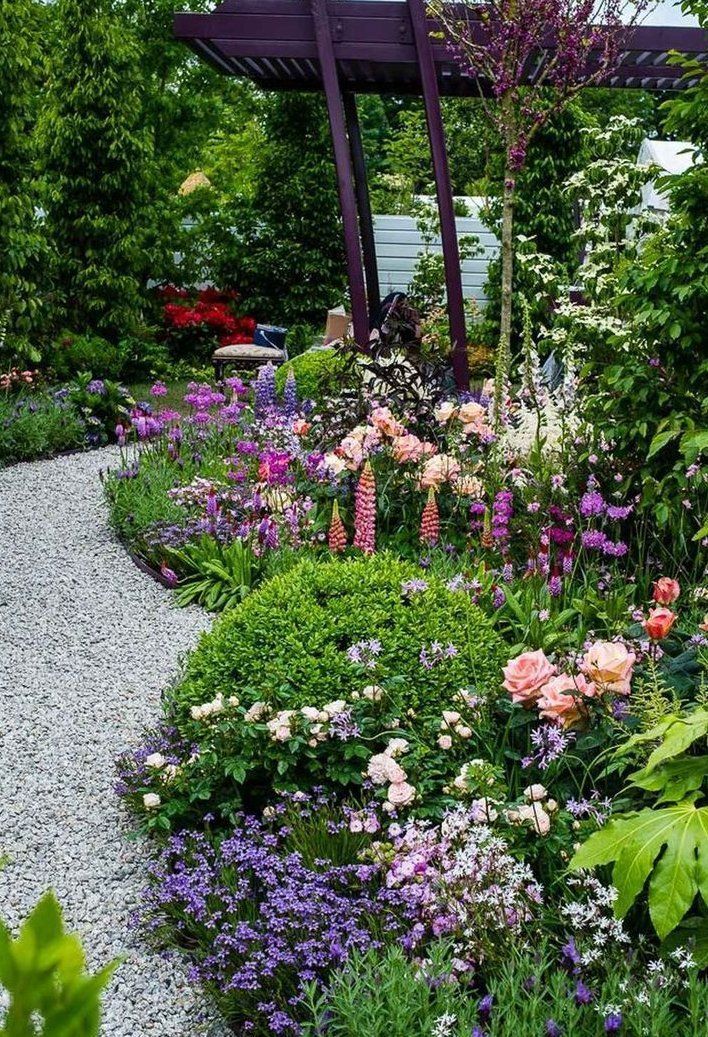 Some will be most successful as the design centrepiece while others are better tucked away within planting so that you aren’t fully aware of them until you enter the garden.
Some will be most successful as the design centrepiece while others are better tucked away within planting so that you aren’t fully aware of them until you enter the garden.
11. Light right
(Image credit: Future / Emma Lee)
Dan Bowyer from Fisher Tomlin & Bowyer explains how clever outdoor lighting ideas can transform small spaces: 'Lighting specific areas and focal points will create interest and provide a backdrop to the house all year round, even at times when you are not in the garden.'
'It is important to not light the whole space, areas of darkness are essential to the success of a garden lighting scheme,' he advises.
12. Create a shady corner
(Image credit: Future / Mark Bolton )
Think about a shaded spot as a multisensory experience of sight, sound and scent.
Trees provide excellent coverage without blocking too much sun, and can be trimmed back to suit your needs.
The best trees for a small garden include bay trees (Laurus nobilis), Euonymus Japanese Maple (Acer Palmatum) and the Magnolia Christmas Berry (Photinia ‘Little Red Robin’).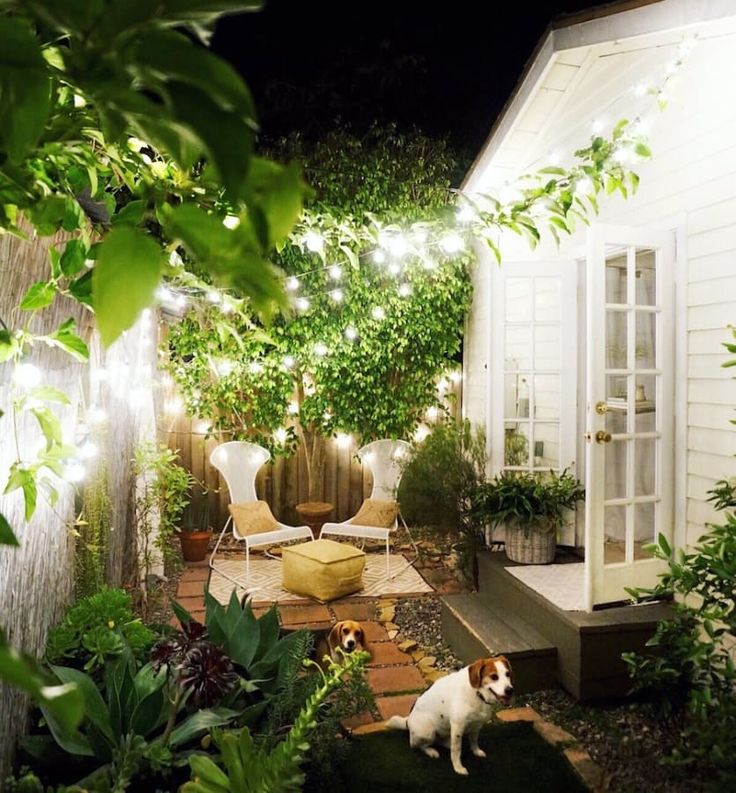
13. Go underground
(Image credit: Future / Darren Chung)
Transform an overlooked or exposed garden space. Sunken gardens make great retreats and are especially useful in urban plots where boundary fences may cast unwanted shade.
Lowering a terrace by just 45cm makes it easier to create a greater sense of privacy with planting or awnings; if you want to go lower, ask a landscape architect to check the water table level and advise on drainage. In a sloping garden, carve out terraces and create an outdoor room on the lowest level.
14. Instil good housekeeping
(Image credit: Future / Lizzie Orme)
It may not sound the most exciting, but getting on top of tasks such as the cleaning and tidying of pots, sheds and greenhouses is the perfect way to ensure that your small garden is clutter-free.
Not only will this allow you to make the most of even the smallest of areas but a tidy space can also make a small garden look bigger.
If space allows, why not invest in a potting shed? Take a look at these shed ideas for more advice.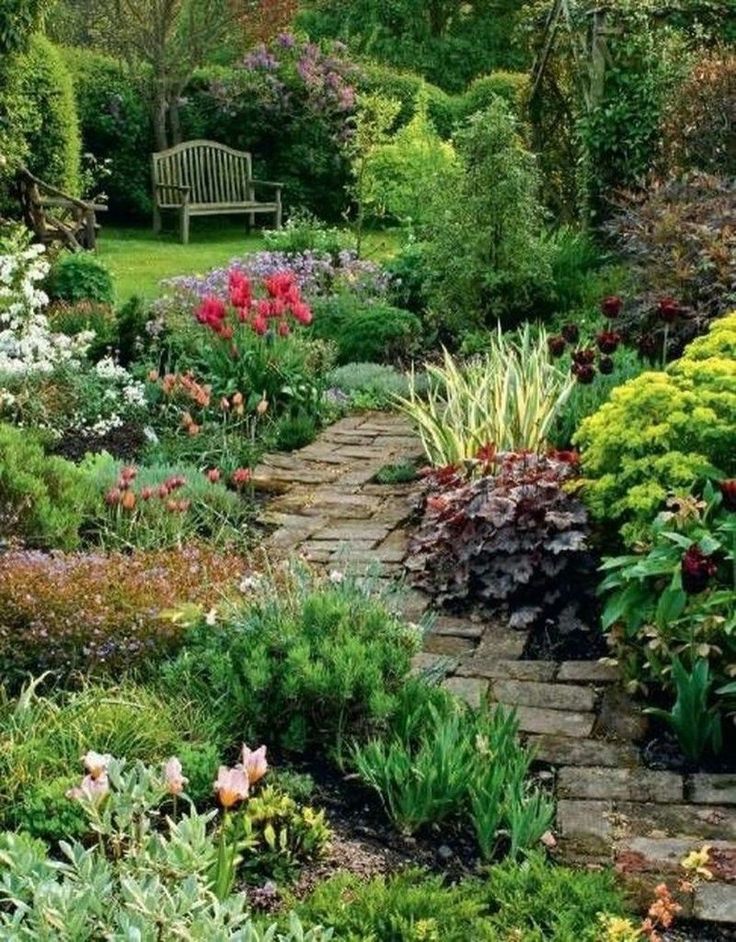
15. Use vertical space in a small garden
(Image credit: Future / James Merrell)
If floor space is at a premium, plant vertically instead. One of the most sought after looks this year – living walls are taking planting to a whole new level.
To create these vertical gardens, plants are rooted into a structure which is then attached to an interior, exterior or freestanding wall. Systems can range from something as simple as plant pots hung on a vertical wall, or highly sophisticated modular, hydroponic panels where all the water and nutrient requirements of the plants are precision delivered and monitored electronically.
16. Opt for low-level furniture
(Image credit: Future / Jan Baldwin)
It is hugely important to get the scale just right in a compact area. Look out how your furniture pieces relate to each other and the surrounding space.
A neat garden sofa and armless – or single arm – chairs are good options for a small garden or courtyard where space is limited.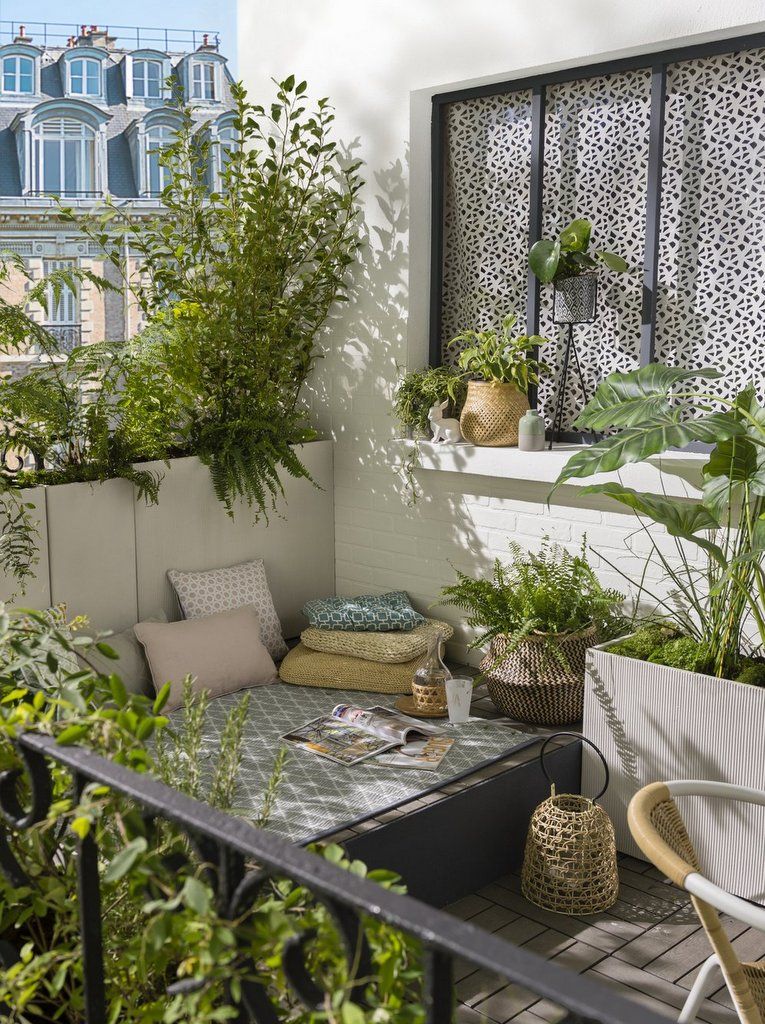
17. Build an office at the end of your small garden
(Image credit: Future / Paul Raeside)
What better way is there to start your working day than a relaxed walk to the end of your garden? You don't need to have a large garden to build one of these, as in the picture above, but if you're looking for long garden ideas then this could be a great addition to the bottom of your garden - as it will be a nice distance away from the main house.
You can hire a builder to create a simple studio, much like the one shown above, for as little as $7,000-$10,000.
Building an extra room with a view of the garden is now a growing trend. With the current vogue for open-plan, multi-purpose family rooms that combine a mix of kitchen, dining and living spaces, garden rooms and orangeries fit the bill perfectly.
18. Enjoy small-scale topiary
(Image credit: Future / Mark Bolton)
Often used on a grand and formal scale, try topiary forms in short-on-space areas to dramatic effect.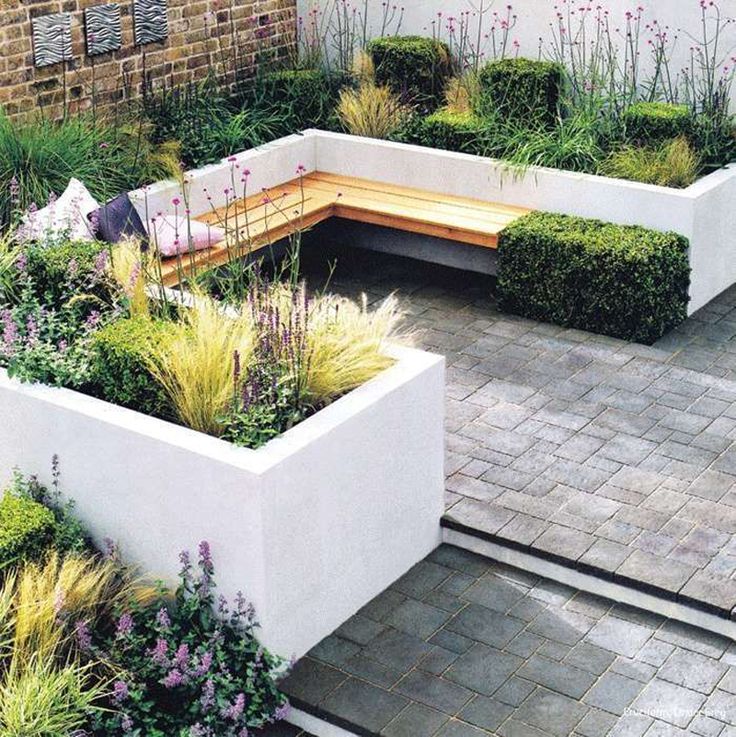
In this tiny garden, topiary box has been cut into balls –in close proximity – to create a chess board feel.
19. Play with scale in a petite garden
(Image credit: Greencube)
Play with scale by using large plants in a small space, choosing green plants that create harmony and texture rather than a riot of color. Try acers and tree ferns as well as perennials and ornamental grasses. This garden was designed by Greencube.
20. Plant around pavers
(Image credit: Alice Ferguson)
Planting around and within the paving and decking in this narrow space, designed by Alice Ferguson, softens the hard landscaping. Strong vertical features, including climbers, draw the eye up.
21. Let your planting sing out
(Image credit: The Florence Nightingale Gardens / RHS / Neil Hepworth)
‘Every garden, no matter how small, can be turned into an asset,’ says John Wyer of Bowles & Wyer, who constructed the medal-winning Florence Nightingale Garden for Chelsea 2021.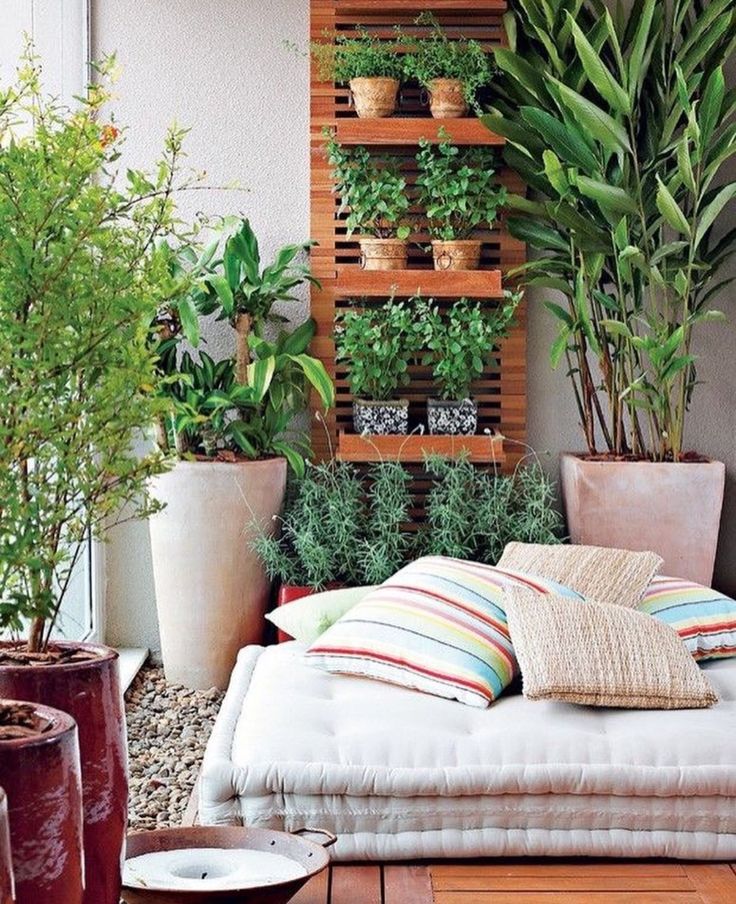 ‘In a smaller space, every millimetre counts. The garden needs to be practical in terms of how you want to use it, but also think about how it will look from adjacent windows as well as from within the garden itself.’
‘In a smaller space, every millimetre counts. The garden needs to be practical in terms of how you want to use it, but also think about how it will look from adjacent windows as well as from within the garden itself.’
He also advises against trying to squeeze in too many ideas. Instead, take bold decisions using a ‘less is more’ approach. ‘Decide on a color scheme and stick to it and you’ll naturally have a more cohesive and impactful garden design,’ he says.
Here, small trees, a simple color palette and soft textured planting in The Florence Nightingale Garden, Chelsea 2021, designed by Bowles & Wyer take center stage.
22. Consider a view
(Image credit: Bowles & Wyer)
Either exploit a borrowed view beyond the garden boundary or create a strong vista within the space,’ says Artisan Landscapes’ Alice Ferguson. ‘In courtyards, terraces and balconies, such as this one by Bowles & Wyer , the garden and house work more than ever as one entity.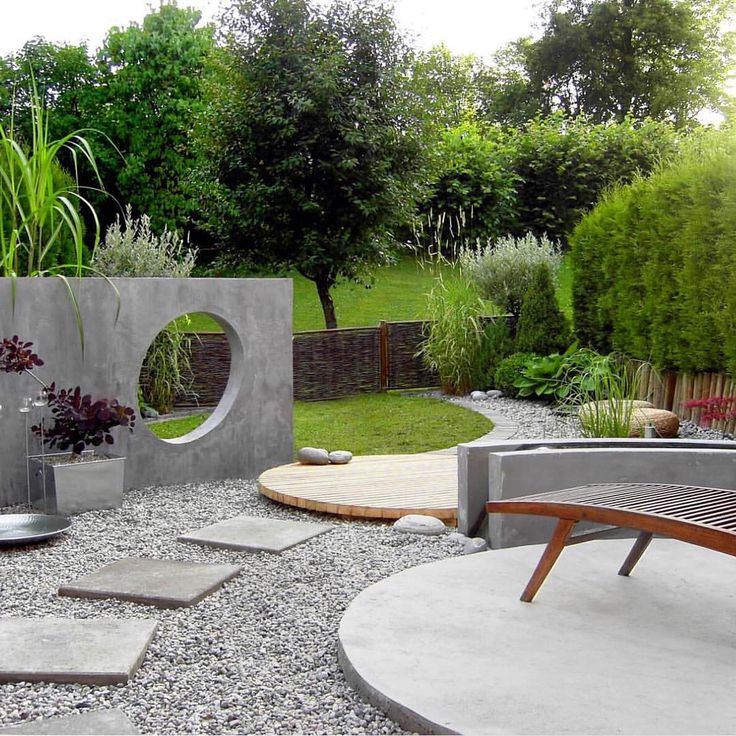 Create a view from the house to the garden that’s inviting and evokes curiosity. Layers of planting with height can transform a small space into a green haven,’ says Alice.
Create a view from the house to the garden that’s inviting and evokes curiosity. Layers of planting with height can transform a small space into a green haven,’ says Alice.
How can I get the most out of my small garden?
In smaller or enclosed spaces, it’s important to draw the eye through simple, enticing design.
Many courtyard or urban gardens can be overlooked. Try obscuring any unwelcome views with considered planting that adds some height but not too much depth so as to avoid eating into a compact square footage.
Long lasting plants such as Verbena Bonariensis add height and can be contained in small areas with flowers lasting from May through to the winter. Often a combination of hard landscaping, such as stone and brick, with bold, architectural planting, works best.
A terrace planted with a pair of large olive trees and a vibrant herb bed for example, will make more impact than a mass of overplanting. If your garden looks out onto a side return, consider painting the wall white to reflect the light and increase a sense of space.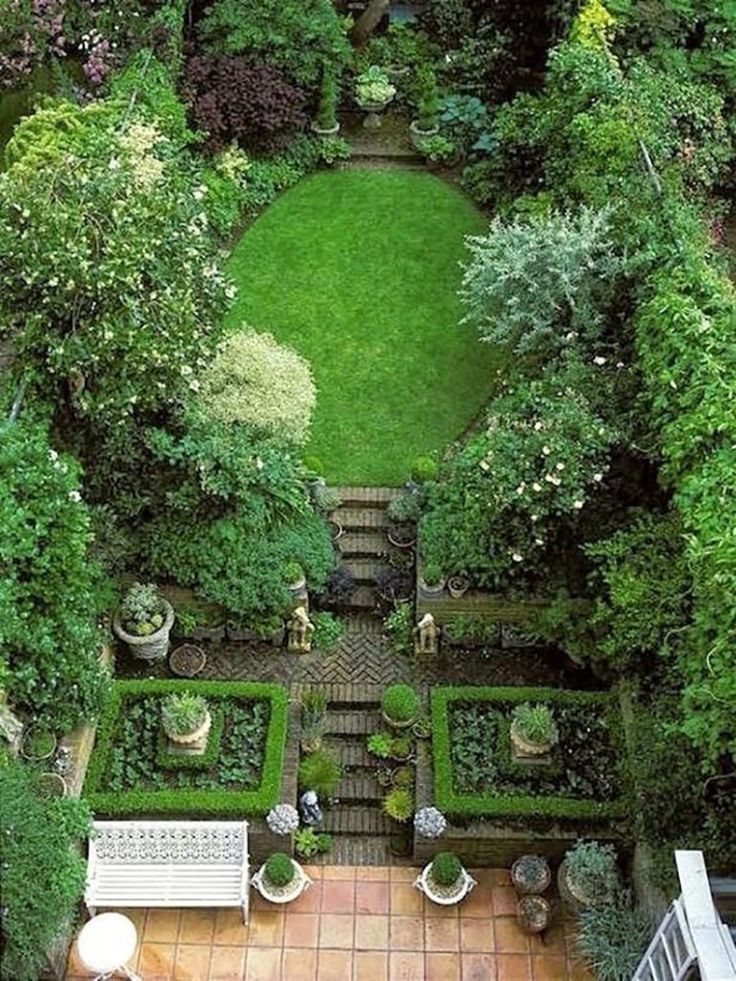
Another trick is to mix hard materials. Stone paving interspersed with narrow pebbled strips can look effective, as can juxtaposing angles, such as contrasting sleek decking with paved travertine.
Length will draw the eye, so try to site a standout plant, sculpture or small water feature towards the end of your space. Consider incorporating fixed seating, such as a banquette seating running along an external wall, to instantly increase the useable space, making sure the spot receives sunshine.
How do you make a small garden look nice?
Use planting to soften hard features. In smaller spaces, a sculpted, streamlined look can work best, such as stone paved terraces, or other materials, whether brick or paint, that that reference the property, combining inside with outside. But counteracting these hard materials with a mixture of clipped and more whimsical planting will soften the edges and add texture and interest. Make sure you know where the sun rises and sets in your garden so that you can plant accordingly.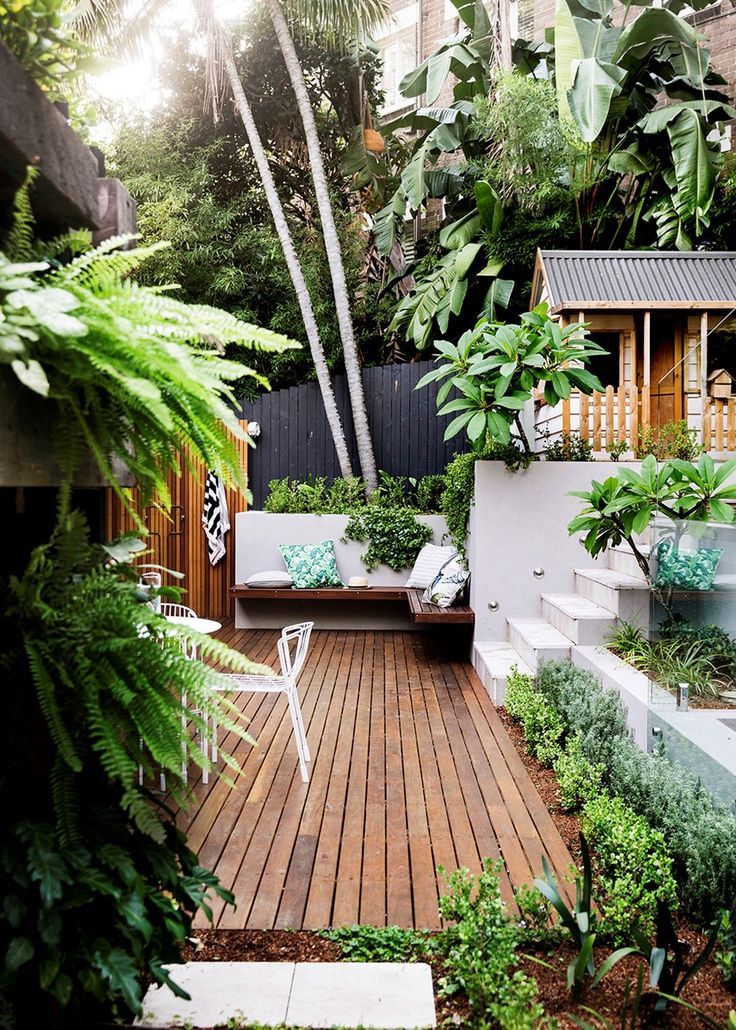
Balconies and roof gardens can benefit from simple planting, too. Prioritise space for sitting or dining and avoid overcrowding with too many varying pot shapes and sizes – aim instead for one or two statement pieces, such as a pair of bay trees or a sumptuous window box of favorite blooms, be they geraniums, hydrangeas, or overflowing campanulas. Finally, invest in some simple but effective lighting for small spaces to enhance appeal and increase the sense of space.
'Small gardens look great with just a few key elements that link the whole space together,' says ,' says Sean Butler, Cube 1994 Ltd . 'This may be through the use of repeating an accent color or a plant. Sometimes I choose a cushion fabric and then repeat its color through the planting. Clipped box can be used as an all year structural plant, while Zantedeschia thrive in city gardens in small amounts of shade and add a lush feel to the garden.'
Jennifer is the Digital Editor at Homes & Gardens.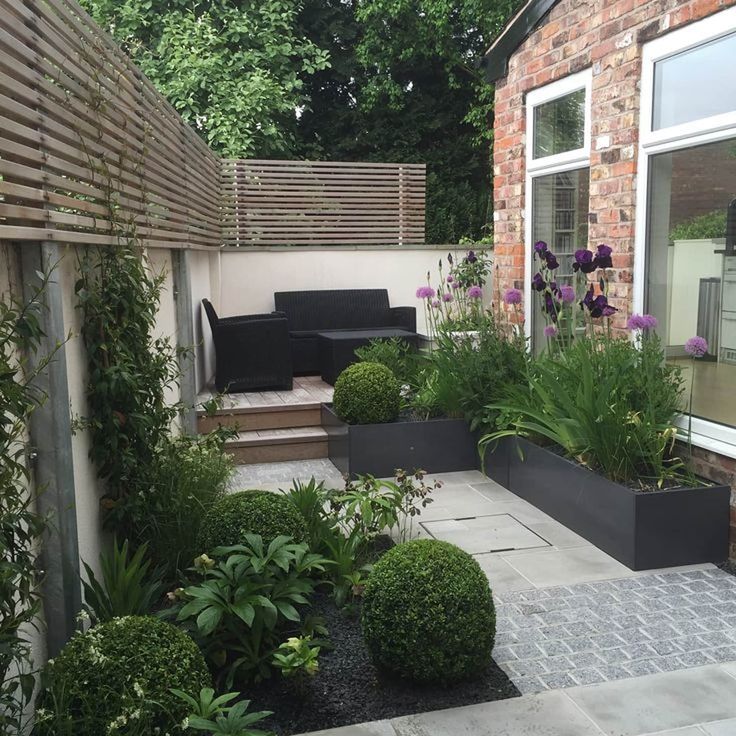 Having worked in the interiors industry for a number of years, spanning many publications, she now hones her digital prowess on the 'best interiors website' in the world. Multi-skilled, Jennifer has worked in PR and marketing, and the occasional dabble in the social media, commercial and e-commerce space. Over the years, she has written about every area of the home, from compiling design houses from some of the best interior designers in the world to sourcing celebrity homes, reviewing appliances and even the odd news story or two.
Having worked in the interiors industry for a number of years, spanning many publications, she now hones her digital prowess on the 'best interiors website' in the world. Multi-skilled, Jennifer has worked in PR and marketing, and the occasional dabble in the social media, commercial and e-commerce space. Over the years, she has written about every area of the home, from compiling design houses from some of the best interior designers in the world to sourcing celebrity homes, reviewing appliances and even the odd news story or two.
With contributions from
- Ailis BrennanContributing Editor
Small Garden Ideas and Inspiration
By
Marie Iannotti
Marie Iannotti
Marie Iannotti is a life-long gardener and a veteran Master Gardener with nearly three decades of experience. She's also an author of three gardening books, a plant photographer, public speaker, and a former Cornell Cooperative Extension Horticulture Educator.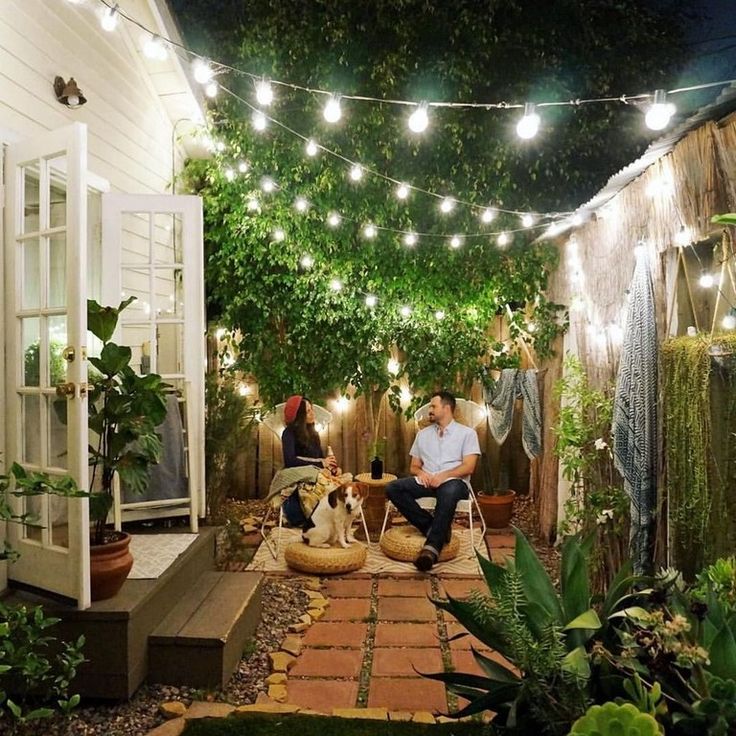 Marie's garden writing has been featured in newspapers and magazines nationwide and she has been interviewed for Martha Stewart Radio, National Public Radio, and numerous articles.
Marie's garden writing has been featured in newspapers and magazines nationwide and she has been interviewed for Martha Stewart Radio, National Public Radio, and numerous articles.
Learn more about The Spruce's Editorial Process
Updated on 02/26/21
The Spruce / Leticia Almeida
Any size yard can be turned into an oasis. Dress up your outdoor entertaining space with potted evergreen topiary. They somehow manage to be both formal and festive at the same time. Since they are evergreen, they will look good at any time of the year. You can even dress them up for the holidays and light them up for evening entertaining.
-
01 of 49
Catch the Eye
Marie IannottiAn island garden in the lawn makes a great focal point.
 Dress it up even more with bold, eye-catching ornaments or large containers. Since the island is viewed from all sides, you can plant tall, full plants in the center, to inspire a feeling of abundance.
Dress it up even more with bold, eye-catching ornaments or large containers. Since the island is viewed from all sides, you can plant tall, full plants in the center, to inspire a feeling of abundance. -
02 of 49
Room With a View
Mark Turner / Getty ImagesNo matter what amount of space you have to garden in, it will always feel larger if there’s some distance between you and the garden. A thin strip of lawn provides enough separation to create a view from your living area. Frame the view with small trees and shrubs and then paint the area with soft textures and colors. Now when you walk out onto your deck, you can step right into the composition. Even the smallest garden will make a big difference.
-
03 of 49
Bright Furniture Lights up a Garden
Mark Turner / Getty ImagesBright-colored furniture and ornaments can set a tone for your garden, even when your plants are not in flower. This is one time that having a small garden is a real advantage because you can get a lot of impact from only a few well-chosen pieces.
 They can be moved about the garden or they can become a part of the garden.
They can be moved about the garden or they can become a part of the garden. -
04 of 49
Expand Your Space With Curves
Juliette Wade / Getty ImagesA typical small, square, suburban backyard will expand in size with the addition of curving paths that partially obscure the view around them. Avid gardeners can wind their way throughout the yard, but even a single crescent will create intrigue. Keep the look cohesive by repeating color intermittently throughout the planting. The use of cool blue plants at the end of the border further creates a sense of distance.
-
05 of 49
Easy Formality
Ron Evans / Getty ImagesCreate your own Versailles with the help of clipped hedges and evergreen parterres with geometrical details. One good pruning in the spring and a little touch-up mid-season is all it takes to make your home your castle. You can dress it up or down with seasonal pots of colorful flowers and furniture to suit your taste.
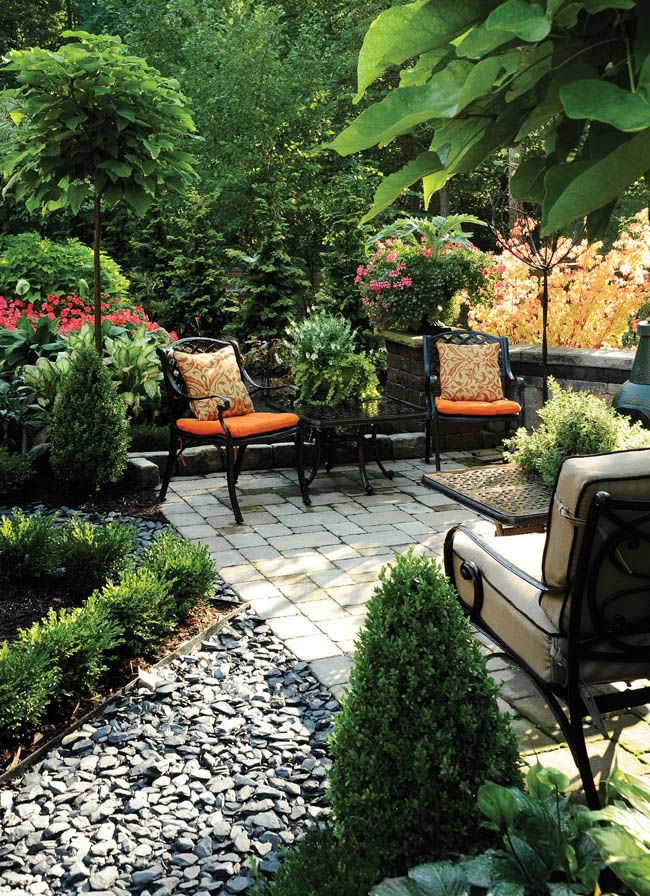
-
06 of 49
Street Style
Kerstin Waurick / Getty ImagesEven if you have no yard at all, you can still make room for a smaller garden. Whether you are trying to create a sense of privacy or encourage neighbors to stop by and chat, a simple table and chairs encircled with large containers turns this open space into a joyful bistro-like gathering spot.
-
07 of 49
Intimate Dining
Neil Holmes / Getty ImagesIf the only space you have to garden in is a tiny courtyard, look up, rather than out. By training vines along the wall of the house and the adjoining fence, an intimate, yet opulent, dining space is created. The small pond in the foreground adds a cottage garden feel, with moss growing on the stone and wide clumps of flowering plants.
-
08 of 49
Borrowed View
Marie Iannotti
If your small yard borders a wooded area, borrow the view and create some intrigue about what's on the other side.
 Nothing works better than a see-through fence with a gate. Let the garden path lead right up to the gate and then make it all the more alluring by placing a focal plant or container on the other side of the gate. It doesn’t matter if you never venture into the woods, you will feel like the expanse is all part of your yard.
Nothing works better than a see-through fence with a gate. Let the garden path lead right up to the gate and then make it all the more alluring by placing a focal plant or container on the other side of the gate. It doesn’t matter if you never venture into the woods, you will feel like the expanse is all part of your yard. -
09 of 49
Spread Out
Claire Higgins / Getty ImagesThe only thing more amazing than how much fruit you can get from one espaliered tree is how attractive and tempting it looks spread out on a patio fence or wall. While it looks very complicated and exacting, all it takes to grow a trellised fruit tree is some hooks, wire, and patience. In a few years, you'll have an orchard within arms reach. Apples, pears, peaches, plums, even persimmons can all be trained to grow this way.
-
10 of 49
Colorful Practicality
Anne Green-Armytage / Getty ImagesLadders are often used to hold things indoors and are just as functional and attractive outside.
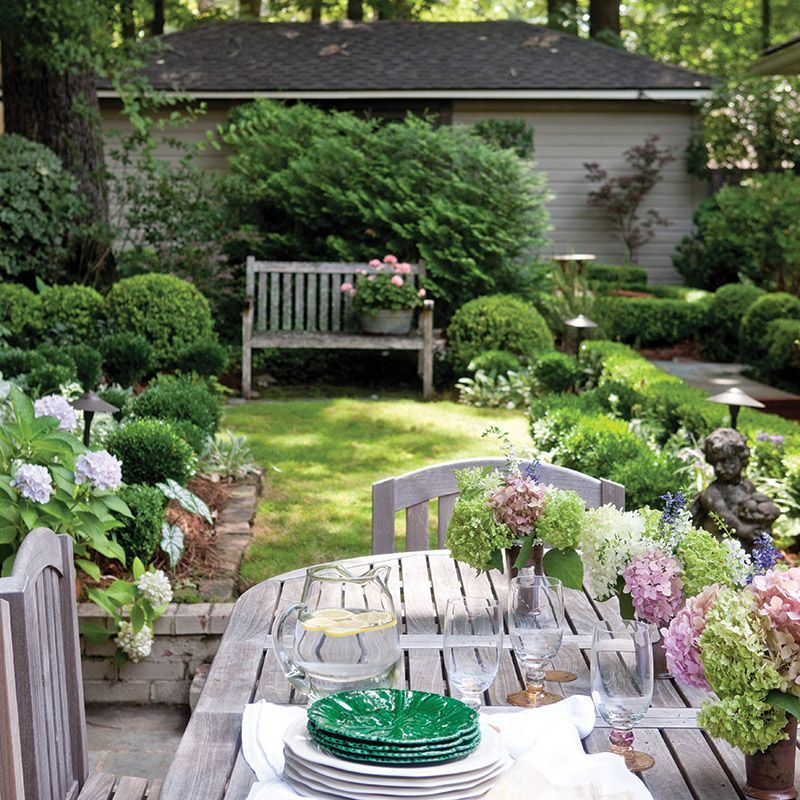 Whether you choose a rustic ladder with well-worn character or paint it a bright, cheerful color, ladders are a great way to add a curtain of greenery to a wall.
Whether you choose a rustic ladder with well-worn character or paint it a bright, cheerful color, ladders are a great way to add a curtain of greenery to a wall. -
11 of 49
Backdoor Luxury
Eirasophie / Getty ImagesJust because a garden space is small doesn't mean it can't be grand. Rather than a standard deck with an umbrella table and grill, this space incorporates a water garden filled with lush, low-maintenance plants, such as hostas, ornamental grasses, water lilies, and a flowering clematis vine, for color. The sound of trickling water can be enjoyed in over-sized, comfy chairs that offer a respite from the afternoon sun with an over-sized arbor and bamboo shades.
-
12 of 49
Capitalize on Trees
YinYang / Getty ImagesIf you are lucky enough to have a shade tree in your yard, put it to good use and create a seating area nearby. The spiraling pattern of the borders makes the space seem larger. Raised beds nearby provide extra seating or table space and make the garden easier to maintain.
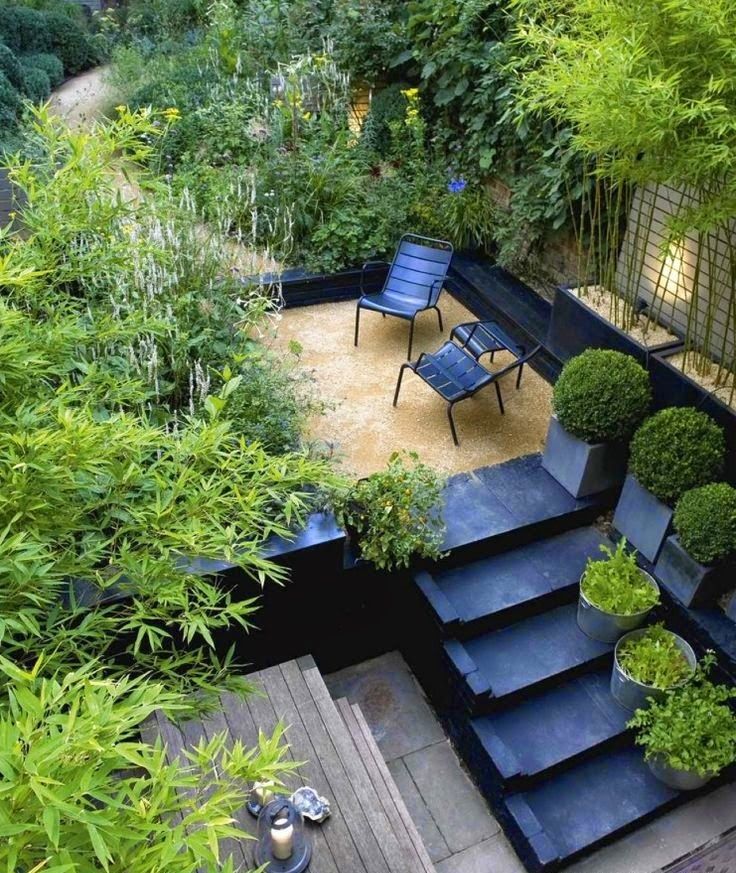
-
13 of 49
Add Lights, for an Evening Sparkle
Joseph Esquivel / Eyeem / Getty ImagesA small garden can be magical at night, with the addition of hanging lights. You can string the trees with fairy lights or create your own, personalized lanterns. A rope attached to the lids of canning jars filled with candles or LED lights does the trick here. Make it even more magical by including some fragrant flowers, to take over as the flowers take a backseat in the dark.
-
14 of 49
Pull Them In
Chris Mellor / Getty ImagesA welcoming entryway gives a house character. Vines and shrubs are also a great option, but when your entryway is entirely paved, containers are the way to go. Don’t go small on impact. Either choose a large container and fill it to overflowing with plants or use smaller pots and lots of them. These geraniums and impatiens make a joyful greeting without getting in the way of anyone going up the steps.
 Annual plants are great choices because they will remain in bloom all season.
Annual plants are great choices because they will remain in bloom all season. -
15 of 49
Potted Fruit Trees
Paul Taylor / Getty ImagesJust about anything that can be grown in the ground can be grown in a container. If you spend the bulk of your outdoor time on your deck or patio, bring some appetizing plants right near your table. Dwarf citrus trees are perfect candidates for patio containers. They don’t need an overly large pot and remain small enough to move about if you need to. Although citrus trees cannot withstand freezing winters, they can be brought indoors to enjoy as houseplants until you and your tree are ready to revel in summer sunshine again.
-
16 of 49
Street Cred
Marie IannottiSometimes the sunniest spot in the yard is out front. Set your house apart with some unexpected curb appeal. Larger shrubs keep the proportion of a more traditional foundation planting and also reduce the amount of maintenance you will have to do.
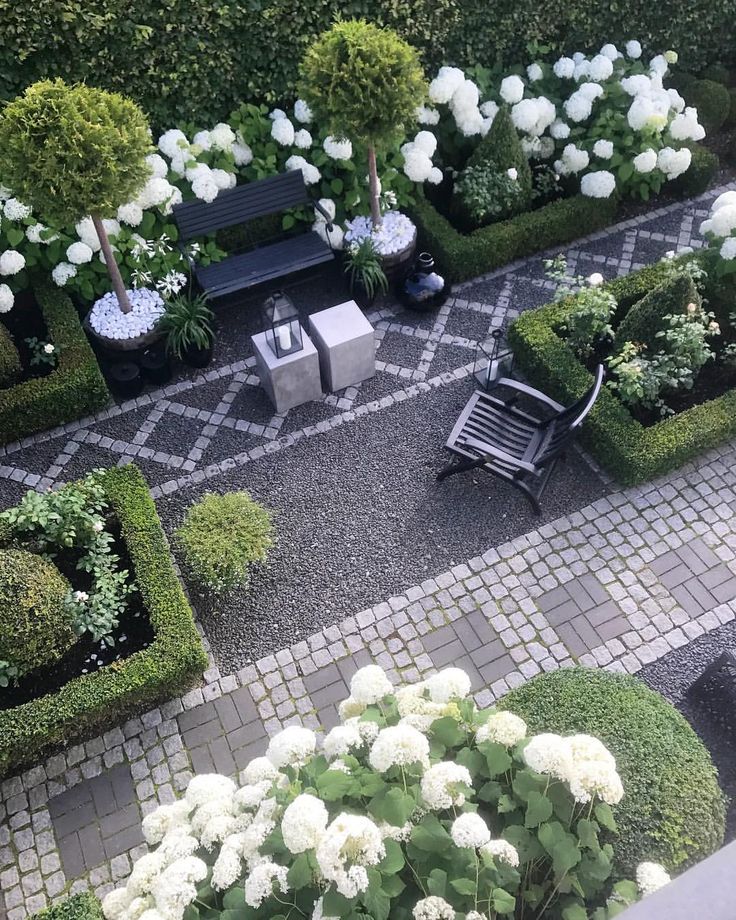 That is something important to keep in mind if you live on a busy road. Make sure you can still see out your windows but have fun tucking in small surprises of color and texture or scent.
That is something important to keep in mind if you live on a busy road. Make sure you can still see out your windows but have fun tucking in small surprises of color and texture or scent. -
17 of 49
Feed the Birds
Mark Rainwater / EyeEm / Getty ImagesSome wildlife is welcome in the garden and birds would have to be at the top of the list. A bird feeder is a charming garden ornament all year, especially in winter, when it attracts a flurry of hungry birds. They'll add color, sound, and movement when your yard needs it most.
-
18 of 49
Spice up the Table
Maximilian Stock Ltd. / Getty ImagesHerbs are among the easiest edible plants to grow and they require very little space. Not only are potted herbs space savers, but they can be kept handy for spicing up your dishes at the last minute. You could even keep a pot on your table, for the freshest flavor possible.
-
19 of 49
Top off the Railings
kevin miller / Getty ImagesDress up the top of your deck's railings with flower boxes contoured to fit snuggly over the rail.
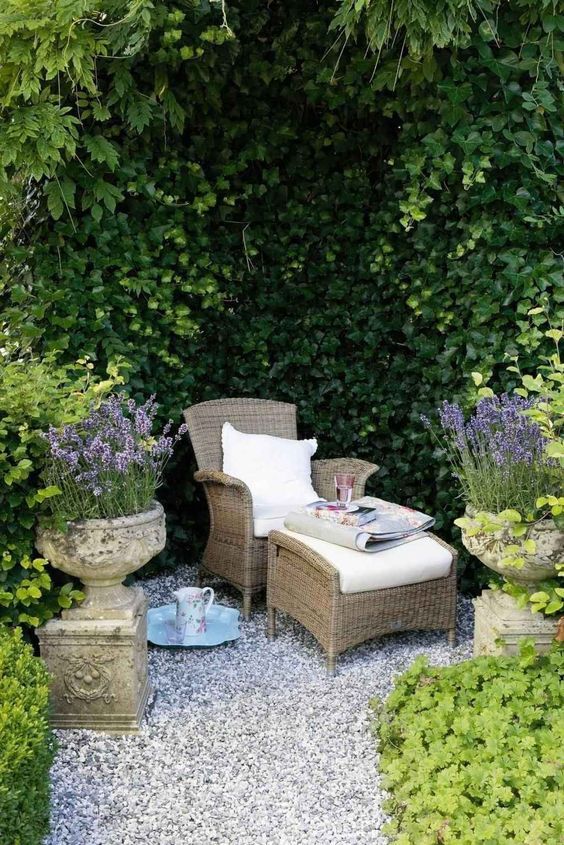 They add color to the deck, without taking up floor space. They even give a little extra privacy.
They add color to the deck, without taking up floor space. They even give a little extra privacy. -
20 of 49
Contained Enthusiasm
Marie IannottiCreating a container garden is the easiest way to add plants and color to a small space. Mix up the sizes of the containers and also the plants, for a true garden feel. Maintaining a color palette within either the plants or the containers themselves will tie the space together and make it feel like a real garden.
-
21 of 49
Succulent Tapestry
Mark Turner / Getty ImagesLove the look of a verdant garden but not the maintenance. If you don’t have the interest or the time to devote to a flowering garden, succulent plants are the answer for you. These fleshy-leaved plants virtually never need to be watered and there’s no need to prune or deadhead, either. Many will happily spread and flow into one another, creating a tapestry carpet that smothers out weeds. Even if they don’t have spectacular flowers, the leaves can be colorful enough on their own.
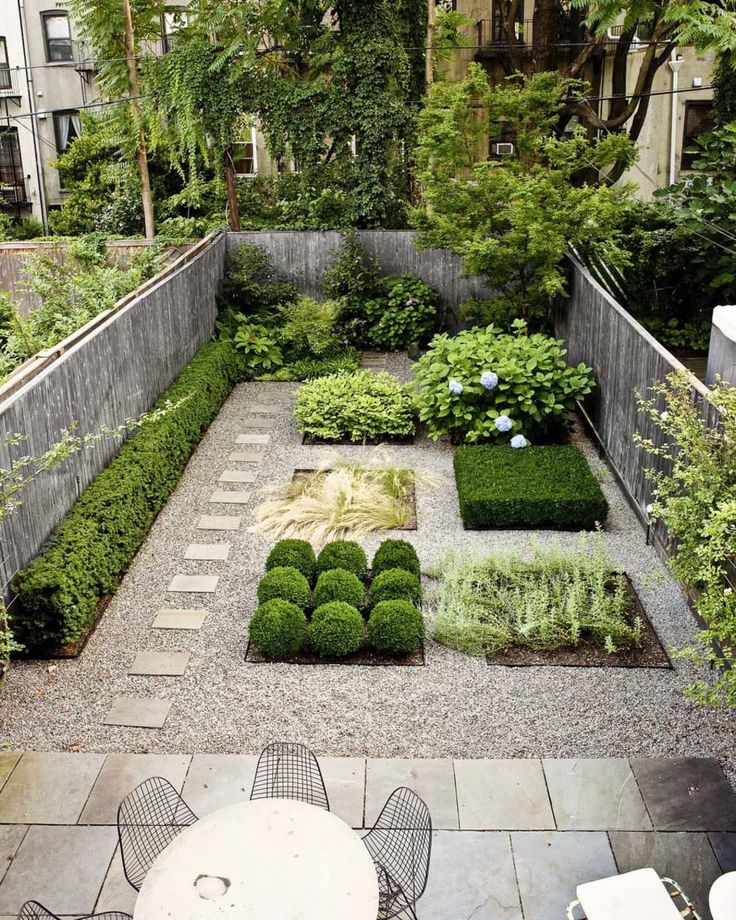 And many survive for years on neglect. Feel free to express yourself in other ways and add a personal touch to your succulent garden.
And many survive for years on neglect. Feel free to express yourself in other ways and add a personal touch to your succulent garden. -
22 of 49
Enclosure and Privacy With a Simple Hedge
Sebastiaan Van Angelbeek-Van Trappe / EyeEm / Getty ImagesAdd weight to a small garden space by defining it with walls. Walking through hedges announces that a garden has begun. You can make it your private sanctuary. Evergreen hedges also provide the perfect backdrop for smaller plants and accent colorful flowers and foliage.
-
23 of 49
Gazebo
Jumping Rocks / UIG / Getty Images
There’s something about being in a gazebo that makes you feel like you are truly part of the garden. Garden benches are often mere decoration, but a gazebo invites you to bring a pitcher of lemonade, a snack, and a few friends and sit for a moment to savor what you’ve accomplished. Put up a gazebo, whether it is rustic or ornate, and you will find yourself dressing it up with plants and comfy cushions and making up excuses to visit.
 There is no better place to inspire some summer reading or have a glass of wine at the end of the day than in your gazebo.
There is no better place to inspire some summer reading or have a glass of wine at the end of the day than in your gazebo. -
24 of 49
Pot up a Tree
Mark Turner / Getty ImagesEvery yard and garden needs a tree to lift the eyes. However, even dwarf trees can grow quite large and take over the space. Tree roots travel much wider than the branches of the tree and they can push through lawns and even your home’s foundation. The perfect solution is to add a potted tree or two to your yard. You’ll need a fairly large pot, but the roots won’t wander any further than their container, while you get to enjoy the breathing space.
-
25 of 49
Let it Go
Mark Turner / Getty ImagesThere are no rules in the garden. It’s the perfect place to put your style on show and a great way to do that is to display the things you love to collect. Whether it is wooden wheelbarrows, bright glass bottles, seashells, or garden gnomes, the things that inspire you to make a small space garden even more intimate.
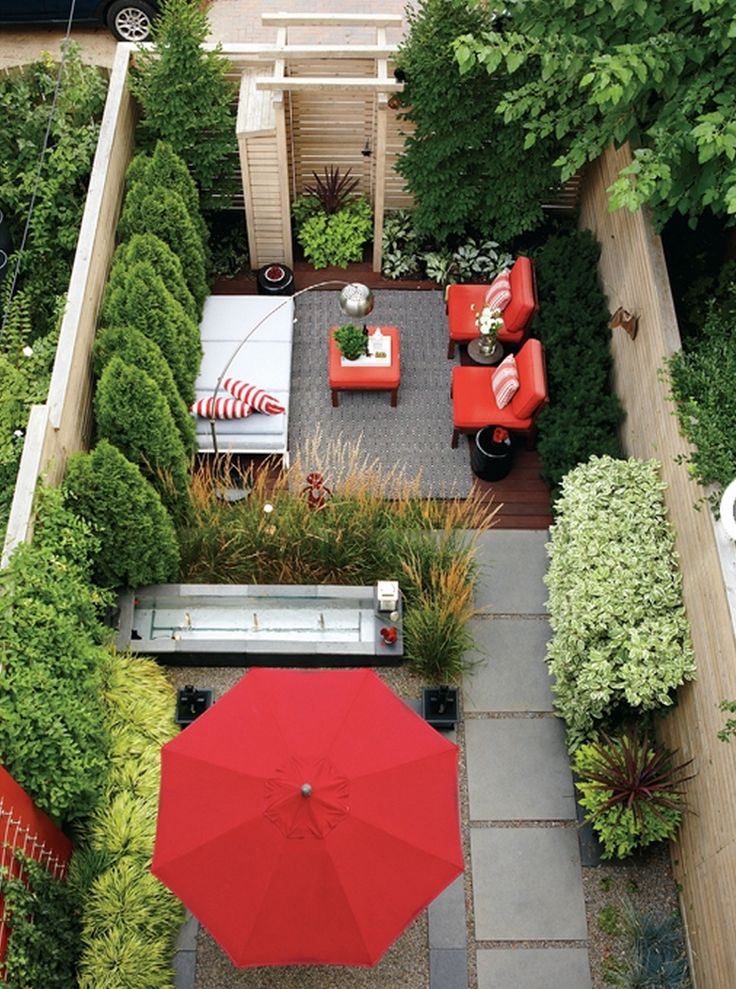
-
26 of 49
A Moveable Feast
David Q. Cavagnaro / Getty ImagesYou don’t need a “lower 40” to grow your food. Starting small is often the key to enjoying vegetable gardening, which can be a lot of work. You’ll be surprised how much you can grow in a few square feet of soil. Tomatoes, peppers, and beans can even be grown in containers. Limited space should not limit your enjoyment of a homegrown meal.
-
27 of 49
Private Retreat at Home
Mark Turner / Getty ImagesRather than putting your entertaining area right outside your door, make it a retreat in a shady corner of your yard. Fill it with soft, sumptuous plants, add a little privacy screening, and live out there day and night.
-
28 of 49
Plant Divas
Mark Turner / Getty ImagesAdd some drama to a small space by including one large, animated plant, like this arching agave. It almost doesn’t matter what else is planted nearby, since all eyes will be on your diva.
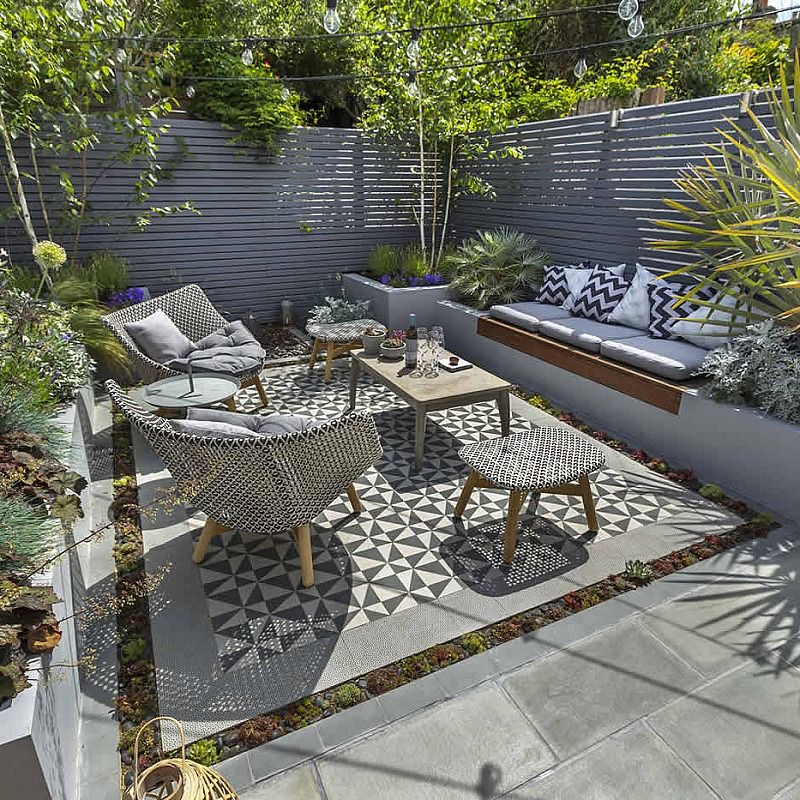 Place it along a path, where there will be no chance of missing it. It will anchor your whole garden and make any flaws seem to disappear.
Place it along a path, where there will be no chance of missing it. It will anchor your whole garden and make any flaws seem to disappear. -
29 of 49
Garden Folly
Marie IannottiIt’s an old trick, but it works just as well now as it did centuries ago. On large estates, elaborate small buildings were built on the fringe of the garden, just for whimsy. They were called follies and were meant for visual appeal, not for any practical use. However, they are hard to miss and it is almost a guarantee that any visitor to your garden will make the walk out there to get a closer look.
-
30 of 49
Beckon
Mark Turner / Getty ImagesGarden gates are not meant to keep people out. Give people an idea of what’s to come, in front of your gate, and then leave the gate a little ajar to let them know they are welcome to come through. How could you resist wandering down that path? The fact that the gate is dangling open causes you to create a story of what’s going on down there, in your mind.
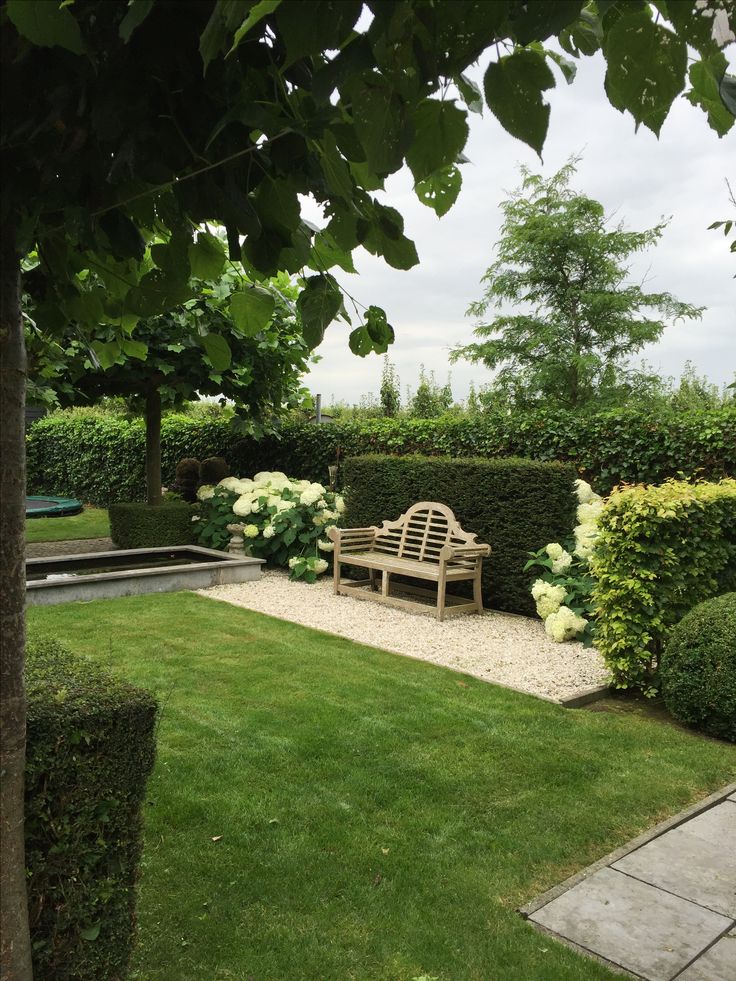
-
31 of 49
Flowering Shrubs
Mark Turner / Getty ImagesShrubs are great plants for adding multi-season interest and minimal maintenance. When the sun hits flowering shrubs, they can light up your yard. You can find shrubs that flower at just about any time during the growing season in colors for every taste. They are the quickest way to add impact to a small garden.
-
32 of 49
Inviting Path
Mark Turner / Getty ImagesPathways always make a garden more interesting and inspiring. They make your eye pause as it scans down a border and, with a few carefully placed bends, trick you into pausing and having a good look around. Paths can be left bare, planted over with grass, or they can be made of some type of stone or gravel. Brick paths are especially enchanting because the color is such a natural complement for most plants and the patterns they create make even the smallest garden seem larger.
-
33 of 49
Tea in the Garden
Mark Turner / Getty ImagesThe Japanese Tea practice can be very exacting, but the sense of peace created in a tea garden can be created in any size space, even if you break some of the rules.
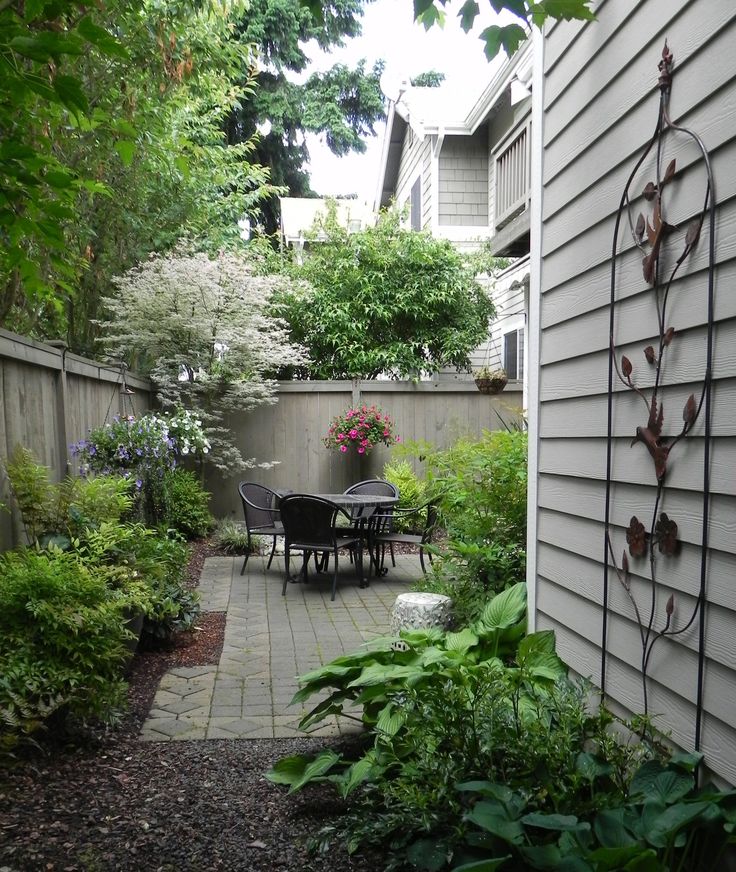 Most are kept very simple, with a small wooden building or gazebo and a handful of subtle plants. If you are looking for a quiet, contemplative idea for your small garden, a tea garden could hit the spot.
Most are kept very simple, with a small wooden building or gazebo and a handful of subtle plants. If you are looking for a quiet, contemplative idea for your small garden, a tea garden could hit the spot. -
34 of 49
Grow Up
Mark Turner / Getty ImagesDress up a trellis or pergola across a path in your yard with a dramatic flowering vine, like wisteria or climbing hydrangea, and you've essentially doubled your garden space. You could even drape it with grapes or ornamental gourds, for color and function.
-
35 of 49
Make an Entrance
Mark Turner / Getty ImagesHaving your guests enter your garden through a gate is a guaranteed way to create impact. This works especially well if your front yard is tame and inconspicuous and beyond the gate is much more spirited. Having a defined and inspired entrance to your garden can change the feel of the space, the way going from black and white to color did for the Land of Oz.
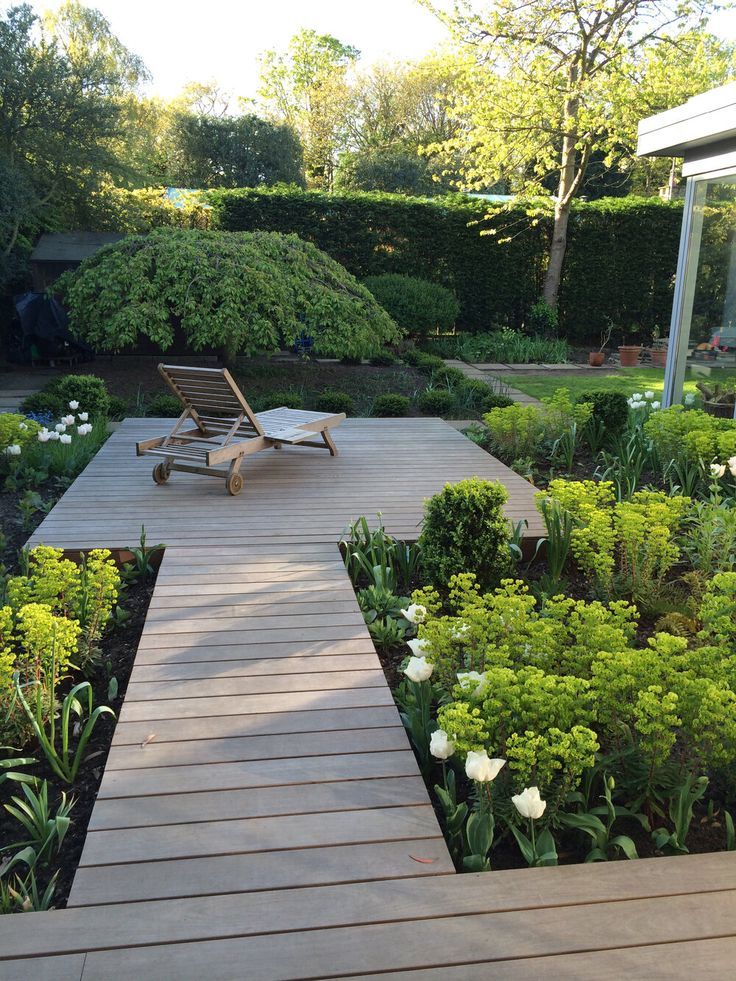
-
36 of 49
Add a Water Garden
Juliette Wade / Getty ImagesWater is such a welcome element in any yard. It always has a cooling effect and if you add a small fountain, the sound is very soothing. Water gardens do not have to be large. You can easily grow water lilies in a few square feet of water.
-
37 of 49
Indulge in Fall
Mark Turner / Getty ImagesEvery bit as important as having flowering shrubs in the yard is planting for fall color. Your space will explode in size when the light hits the changing leaves of plants like Fothergilla, spicebush (Lindera benzoin), oakleaf hydrangea (Hydrangea quercifolia), and highbush blueberries.
-
38 of 49
Lose the Lawn
Mark Turner / Getty ImagesLawns are not the only way to interpret having a yard. If pushing around a lawnmower is not for you, skip the grass and plant your garden right up to your living area. If you miss walking on something green, there are plenty of plants that will grow between the cracks of your stepping stones.
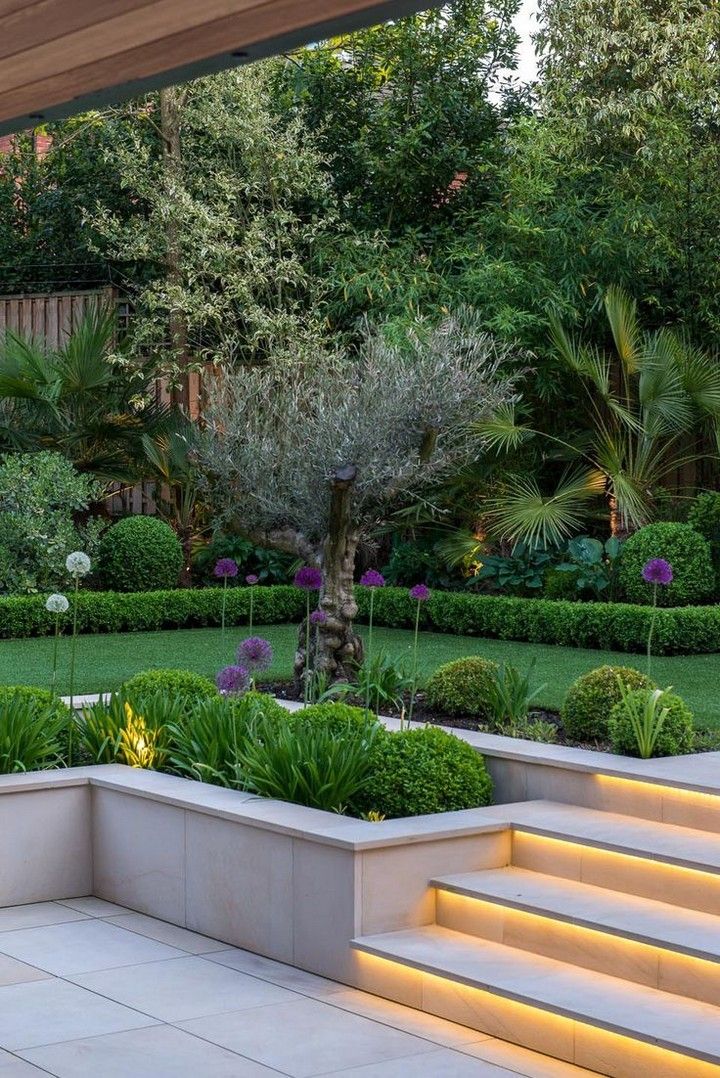
-
39 of 49
Coordinated Accents
Mark Turner / Getty ImagesMost people feel pretty comfortable decorating their homes, so it’s odd how intimidating accessorizing a garden can be. For beginning inspiration, just think about the colors and texture you like. You’ve probably already done that when choosing your plants. Extend it into the ornaments you pick. The idea is that if you like bold, hot colors, glazed pots in similar colors will brighten things even more. Likewise, if you’re drawn to more subdued colors, like these irises, incorporate structures in similar hues. Before you know it, you’ve designed a garden.
-
40 of 49
Reuse, Repurpose, Recycle
Mark Turner / Getty ImagesCreate some eye-level interest in your garden with tall containers. You can find all sorts of options in a salvage store, like chimney pipes and concrete columns. You can be as artistic or whimsical as you like. The containers and stands may steal the show from your plants, but you can also swap the plants in and out for a whole new feel.
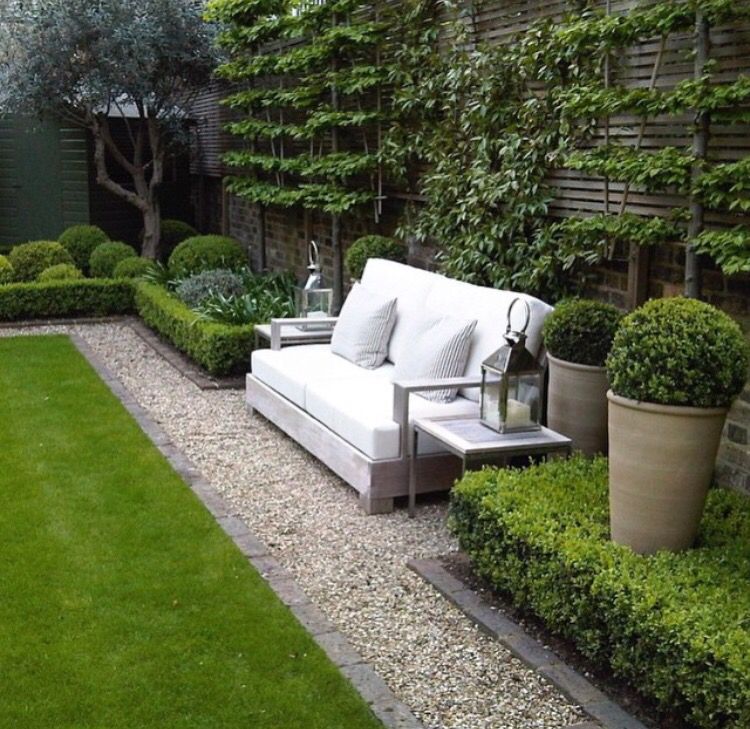
-
41 of 49
Double Duty Containers
Mark Turner / Getty ImagesIf space is at a premium, you will want to make sure everything in your garden serves multiple functions. Just as you would create layers of plants in a border, you can underplant container-grown trees and other large plants with smaller, showier plants.
-
42 of 49
Build Your Own Living Wall
Heritage Images / Getty ImagesLiving walls of plants are stunning, but they are also complicated to put up and tricky to maintain. Inspire the same effect by attaching potted plants all along an outside wall. They'll still be alive with greenery and you can move them around or swap them out as you like.
-
43 of 49
Easy Living Wall
Jumping Rocks / UIG / Getty Images
There’s a bounty of plant stands available, and they make a great alternative for stacking pots and growing plants vertically. If the idea of a living wall is too daunting for you, look for a multiple pot stand that sits relatively flat against the wall.
 You’ll have the option of switching plants in and out with the season and the same effect as a living wall.
You’ll have the option of switching plants in and out with the season and the same effect as a living wall. -
44 of 49
Reflection
Mel Curtis / Getty ImagesTake a tip from interior designers and use a mirror to expand the space in your garden. Position it to reflect your garden at you, but be careful not to place it in direct sunlight. Mirrors work best in partially shaded gardens, where they can bring in more light and where they will glow in the evening light.
-
45 of 49
Side Yard Garden
Mark Turner / Getty ImagesA narrow side yard is often forgotten space. Rather than using it to stash the garbage cans and hose, let it serve as a small garden, making a nice transition from the busy, public front yard into the family area of the backyard. Choose plants that won’t grow so large you have to squeeze between them and keep your neighbors in mind. Make sure it looks nice from the other side, too.
-
46 of 49
Dress up the Shed
Mark Turner / Getty ImagesUtilitarian buildings and structures are useful in any size year, but in a small space, they can be a huge eyesore.
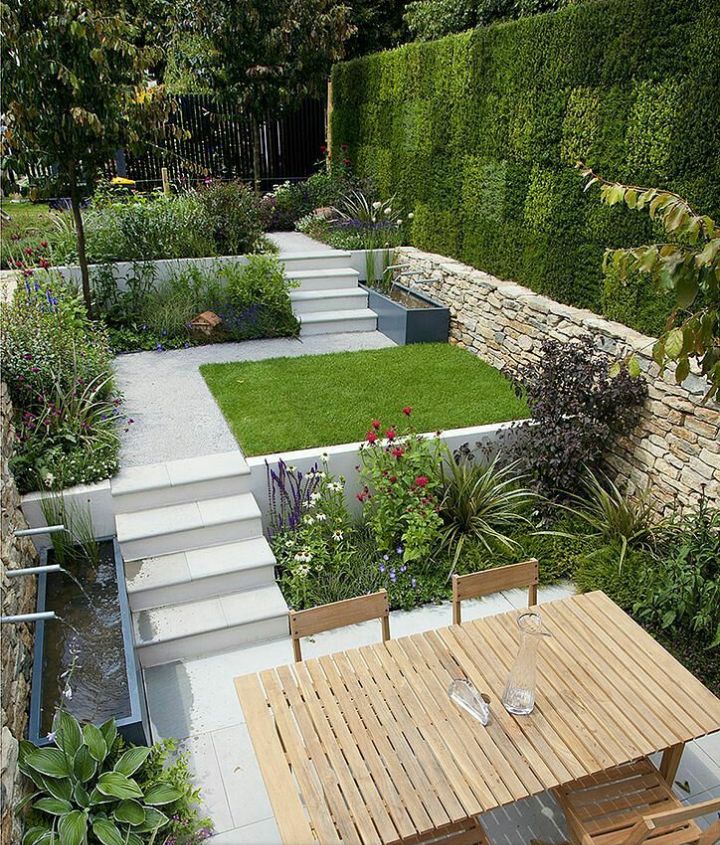 Treat yours as an element in your garden and have some fun dressing them up. A sheet of lattice on a wall makes the perfect surface to grow a flowering vine such as a climbing rose, a clematis, or a quick-growing annual vine. Your storage shed is now a garden cottage.
Treat yours as an element in your garden and have some fun dressing them up. A sheet of lattice on a wall makes the perfect surface to grow a flowering vine such as a climbing rose, a clematis, or a quick-growing annual vine. Your storage shed is now a garden cottage. -
47 of 49
Window Dressing
Ellen Rooney / Getty ImagesWindow boxes instantly dress up any home. You even gain a better view from inside the house. Just by changing the plants, you can have seasonal accents all year.
-
48 of 49
Spill and Soften
Mark Turner / Getty ImagesPlants that tumble over walls onto paving and paths soften hard edges and blur the line between living space and garden. This gentle flow gives the space the illusion of expanding. When you use ebullient plants that are a bit unruly to begin with, you create a bit of abandon and wildness.
-
49 of 49
All the Comforts of Home
Mark Turner / Getty ImagesA covered patio can truly become an outdoor room, with the addition of some indispensable comforts, such as a ceiling fan, shelves and, of course, overstuffed cushions.

Garden Design Ideas & Inspiration
NewMost ReadMost Commented
AllArchitecture Pools Bathroom Living Room Nursery Interior Design Before and After HomeOther Rooms Commercial SpacesKitchens Top Projects of the Week Furniture Home Improvement & Decor Lighting Garden DIY Bedroom Dining Room homify 360°
The design of the front patio and garden at the entrance is the first thing that catches the eye when meeting the house. Neat and well-groomed areas immediately attract attention and create a mood. nine0003
Bukasova S.
19 March 2021
eighteen
Ennobling the garden and the exterior of the plot is an absolute must. Especially in the conditions of remote work, when many people either rushed to rent large houses or even buy them.
Bukasova S.
10. December 2020
6
The implementation of garden design ideas is always not just a design, but also a thoughtful concept.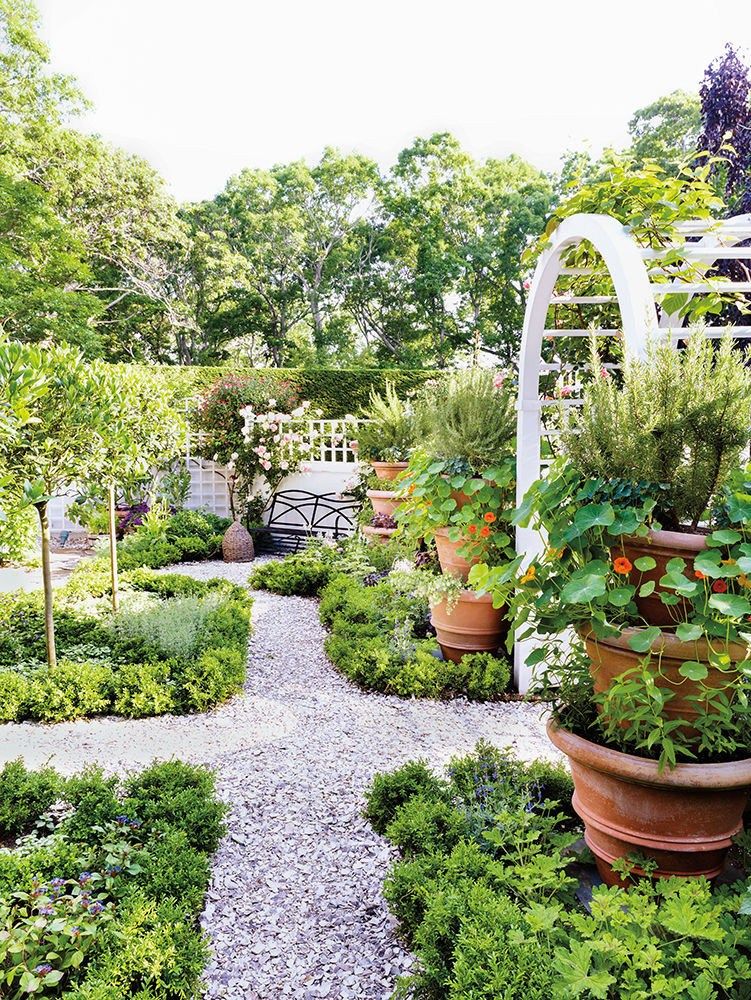 It has to do with engineering, the perspective of plant growth, and the exploitation of materials in various weather conditions. nine0003
It has to do with engineering, the perspective of plant growth, and the exploitation of materials in various weather conditions. nine0003
J S
28. August 2020
2
This canopy was designed and built by international experts from AlpBau. The project is located in the cottage village "Residence" Rublyovo ", an exclusive place with an original architectural design.
J S
23. August 2020
3
The landscape architects at GeoGraffiti know how to turn your yard into an enchanting garden with comfortable seating areas! In this article, we'll show you what a garden design project consists of, how to find the right architect, and why it's important...
J S
2. June 2020
4
Atmospheric garden by GeoGraffiti that impressed us with traditional English grace, space and beauty! Our readers will like this garden project in the Belgian Village KP also because it uses only sustainable natural materials… in outskirts of Moscow. In our new article about him, you will see that the landscape of the English style is ideal for the Russian climate of average…
In our new article about him, you will see that the landscape of the English style is ideal for the Russian climate of average…
J S
26 April 2020
one
Land plot design in country style - dream or reality? Everything is possible - with experienced professionals whose portfolio inspires you! If you are looking for a landscape architect who will create a natural idyll in your backyard in a traditional style…
J S
2. April 2020
2
Garden design in Russia, both in terms of the availability of materials and in terms of the specific climate, has its own specific features. Many exotic plants that we see in photographs of beautiful gardens in Europe or the USA may exist in…
J S
11. March 2020
3
Design ideas for your garden that look natural and spectacular in the midland climate.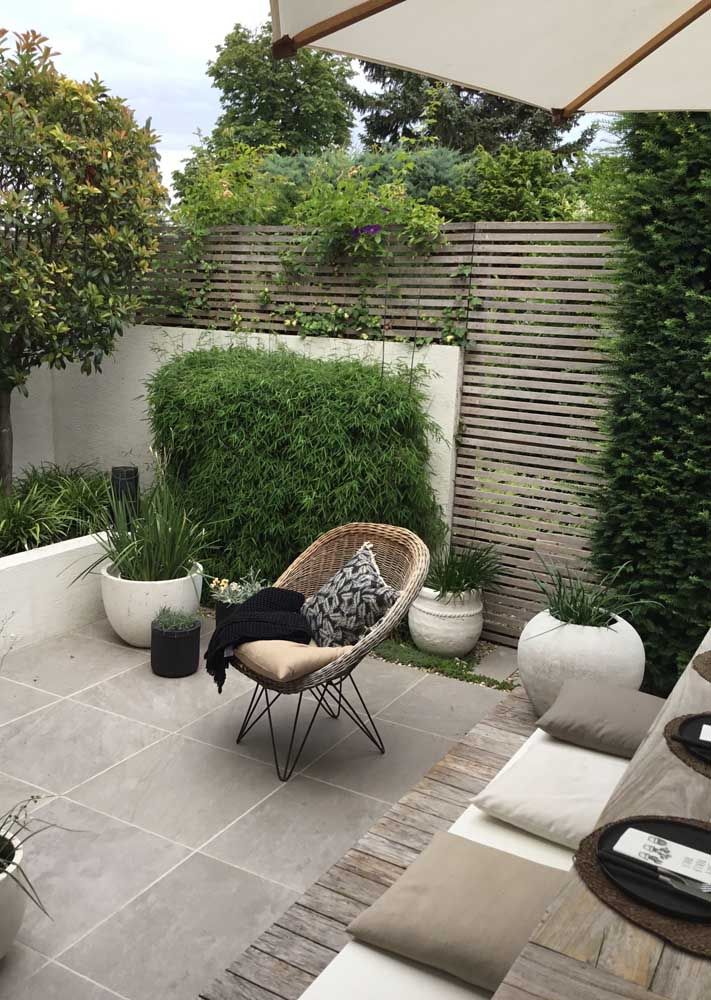 We have collected for you design solutions in landscape and modern styles, perfect for designing a plot in a summer house, cottage or country house. 6
We have collected for you design solutions in landscape and modern styles, perfect for designing a plot in a summer house, cottage or country house. 6
30 garden design ideas - photo
You can't have a better time anywhere than in a beautiful park! The blooming realm of celebrating nature soothes the soul and inspires creativity.
Public parks are filled with interesting design examples. However, when it comes to planning a garden for your home, a lot can seem overwhelming. We offer you a selection of amazing ideas for landscaping the territory.
Flower gardens
Colorful balls represent new life. When planting plants, you want to be original. Try to make flower beds on terraces, which provide the opportunity to carry out landscaping in layers. Better yet, mix flowers with unusual greens for an interesting effect (Greenfingers design). nine0003
Stones, concrete and horizontal wooden beams are commonly used for flower beds.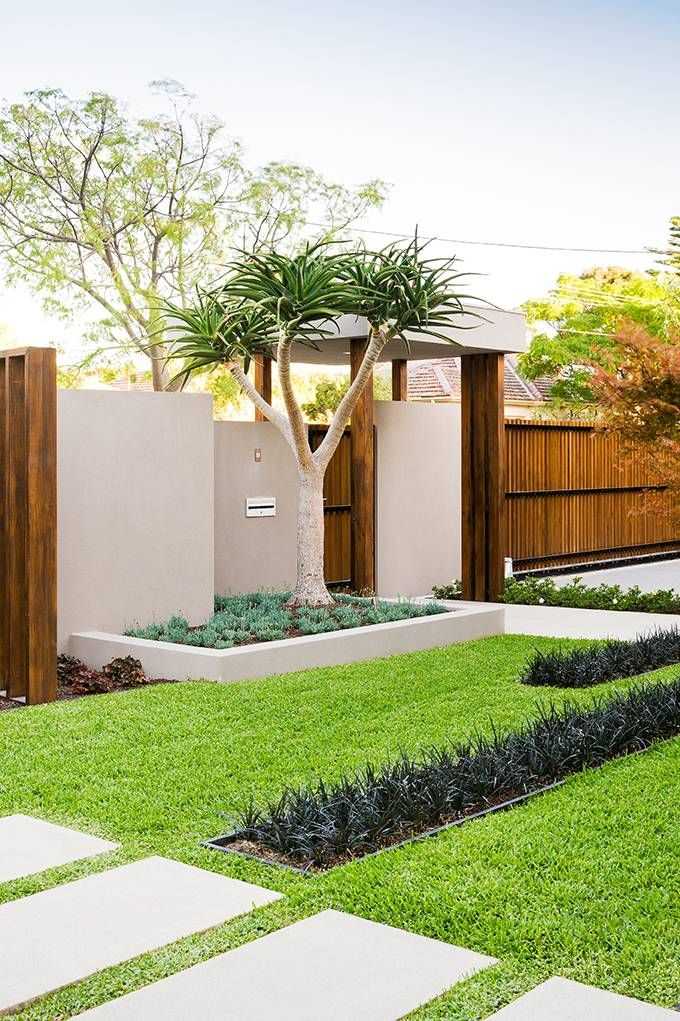 But what about vertical logs? Sometimes even a drop of the unexpected causes admiration. The size and the silvery white tone of the wood are two good reasons for this idea (Design by Cheap Seeds).
But what about vertical logs? Sometimes even a drop of the unexpected causes admiration. The size and the silvery white tone of the wood are two good reasons for this idea (Design by Cheap Seeds).
The creeping garden combines beautiful flowers, lush vegetation and large cobblestones. This combination is a feast for the eyes (Garden Dream design).
Don't forget about interesting containers. Below you can see a diverse range of juicy tones. Their careful processing is also a work of art. Surprise yourself with this planting and see your flower sculptures come to life (Design: The Art Garden).
Don't forget to add heights with trees, and let some of the greenery seem to overflow. There can be many levels of detail here.
Garden greens
Trimmed hedges evoke the magic of English gardens. To refer to this classic technique, we suggest you plant bushes inside the flower bed, and then give them the shape of a sphere. And you will get an image full of charm (Down to Earth Landscapes design).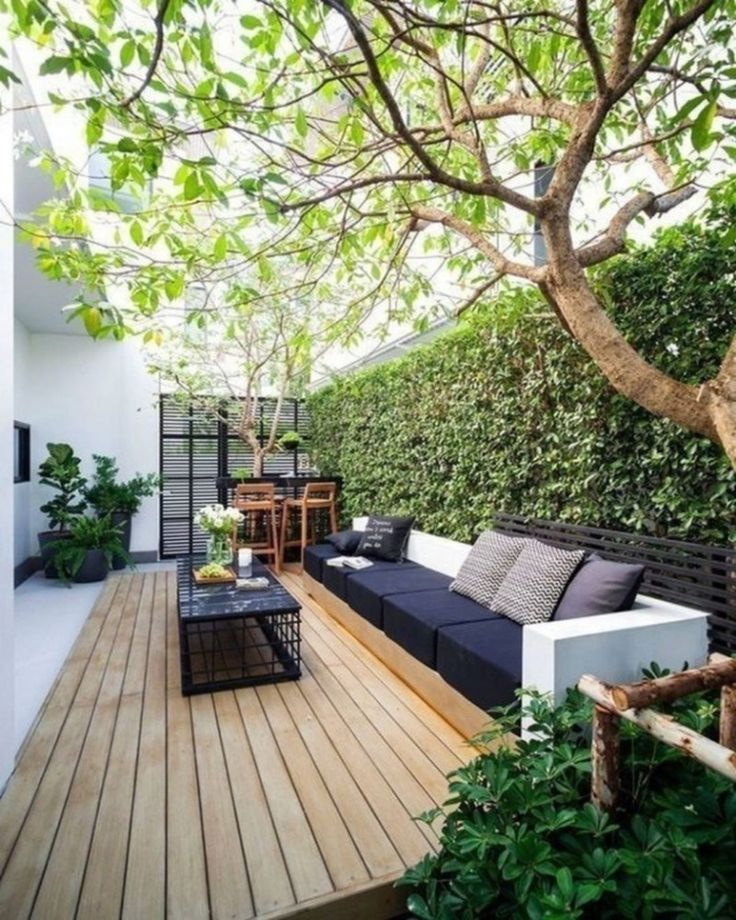 nine0003
nine0003
Another way to add surprise is through contrast. Choose plants with red leaves and surround them with greenery for a pop color (designed by The Road Trip Destination Guide).
Oh, how beautiful is the vine wrapped around the lattice! Usually this part of the garden is the purest color. To enhance this effect, you need to choose a strategically correct assortment of herbs and shrubs to plant around it. And, as a result, a natural paradise filled with various shades of green. [Design: Shirley Bovshow]
For texture and length, add dichondra Silver Falls to your creation. It not only serves as a silvery cover for the earth, but simply irresistibly falls from a height. Who said that a waterfall has to be liquid? (Design Fine Gardening)
Create a lawn in your yard with elegant framing to draw attention to the grass itself. In the image below, a low border of bricks and plants bulges out to show greenery. Garden sculpture takes on grandeur in this setting (image Dumbarton Oaks Garden, from Daily Tea Enjoyment).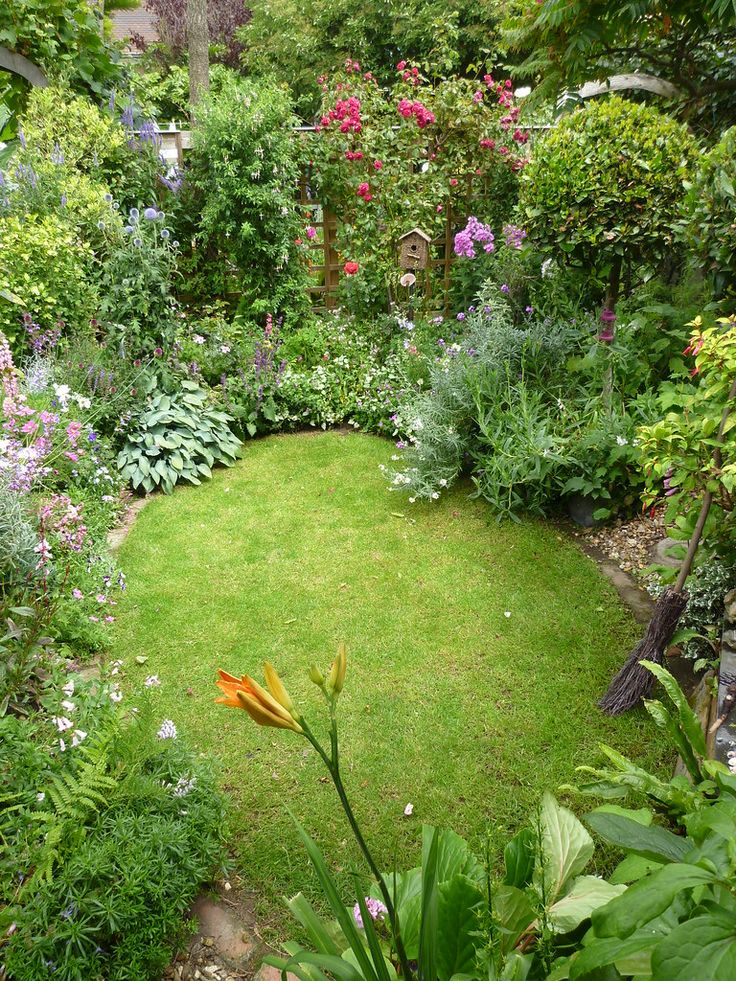 nine0003
nine0003
Garden paths
Create pathways for movement in all directions. Take the time to make garden paths both beautiful and functional. This will expand your space. Do not place concrete slabs end-to-end, leave space between stones. This creates a mesh effect that becomes lush when filled with grass (archinspire design).
If gaps between cobblestones lead to dirt on the paths, try filling them with stunted plants. Even if they spread to these stones. The resulting mounds of vegetation look stunning (design by Fun Design Ideas). nine0003
Not only plants can fill gaps! Fill them with some rocks! Pebbles can help create a modern look, for example when paired with rectangular paving slabs (Design: Living Color Landscapes).
What if your paths are just as purposeful as your flower beds? Making the border of the paths makes them more visible. Especially if the dark stone is surrounded by white pebbles. Best of all, you won't need to mow or fertilize those open paths! (design by MundoHogar.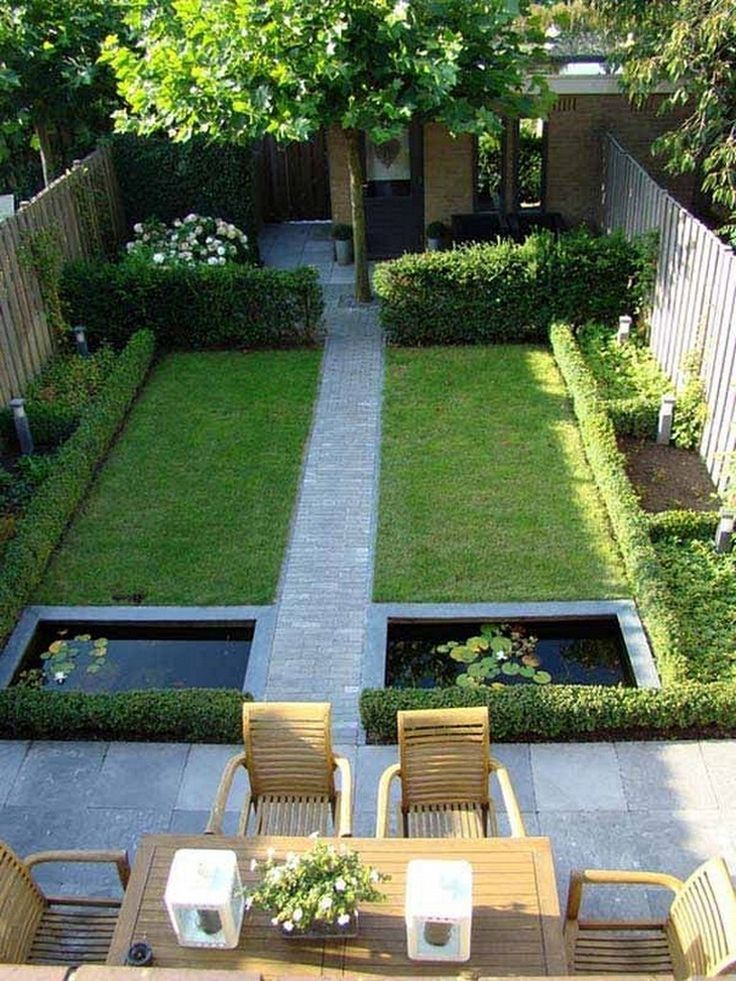 com). nine0003
com). nine0003
Another way to mark the path is to use hedges. Boxwood is a good choice for this. Don't use straight lines, aim for perfect curvature. This will open up a lot of possibilities for you and create geometric interest (Design by Living Color Landscapes).
Garden seats
What you create is a place of peace and contemplation. And nothing contributes to this thoughtfulness more than a welcoming place to sit. Feel free to be simple! And a concrete slab can become a modern bench (paperblog design). nine0003
Hard. Natural. Unexpected. There is a certain authority in the strength of the tree, especially when the group is seated around a table of the same material to rest (Jackson & Fourth Garden Design).
Laminated stone bench is the perfect place to relax and its unique curvilinear shape captures the eye (Down to Earth Landscapes design).
Sometimes rest includes a meal! Create an inviting outdoor space with a clean, flat surface and slatted furniture. Tall bamboo adds a note of privacy, and don't forget the intrigue of the sculptural elements! (DIY Network design)
Tall bamboo adds a note of privacy, and don't forget the intrigue of the sculptural elements! (DIY Network design)
Water objects
The function of water is to soothe. Deciding where and how to place them requires a lot of thought and careful planning. The site itself, the type of surrounding vegetation, practicality, as well as your time and budget are considered. See how a modern rectangular pond complements lush tropical greenery (Design Gardenhouse).
It's really powerful! A simple square pond surrounded by manicured hedges and a flawless green lawn [Design: Down to Earth Landscapes]. nine0141 Strengthen the shape by planting delicate boxwood around the entire perimeter of the border. For an extra thrill, place a birdbath or other statuesque object in the center of the water (Down to Earth Landscapes design).
Remember that water features don't have to be fancy to impress. Birdbaths and beautiful fountains look especially good when they are in a conspicuous place.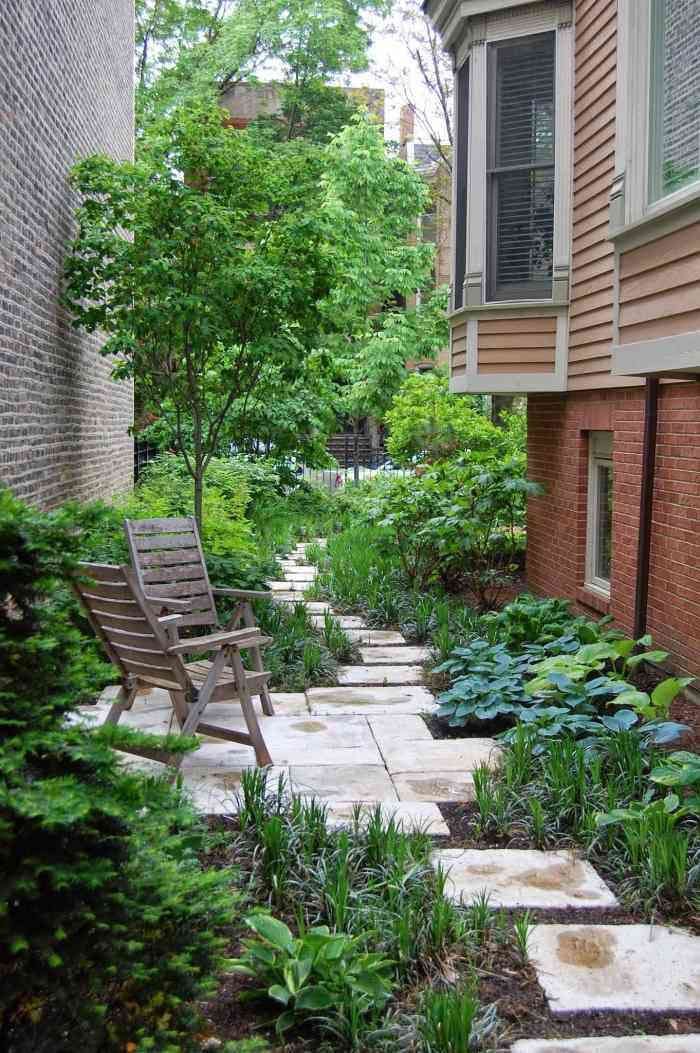 And a layer of polished stones will create the perfect bed for them (Outdoorlivinguk design).
And a layer of polished stones will create the perfect bed for them (Outdoorlivinguk design).
Container gardening
If it is not possible to set up a front garden in the yard, consider a room version! A wide range of attractive containers makes home gardening a reality. Interesting vegetation, including the silvery Tillandsia ("air plant"), turns potted plantings into a conversation of individuality.
If the container is the canvas and the plants are the paint, don't forget to add variety to the composition! Choose herbs and flowers in different colors and heights, and add inanimate elements like rocks to turn an empty pot into an interesting landscape. nine0003
Another way to create attractive compositions is to mix the traditional with the modern. For example, fill concrete vases with feminine flowers, as done in the container on the left (Design: Judy Reyes Photos).
The opposite concept is equally striking! Instead of filling modern pots with regular flowers, fill traditional ones like urns with modern succulents for amazing contrast (Design: InspireBohemia).